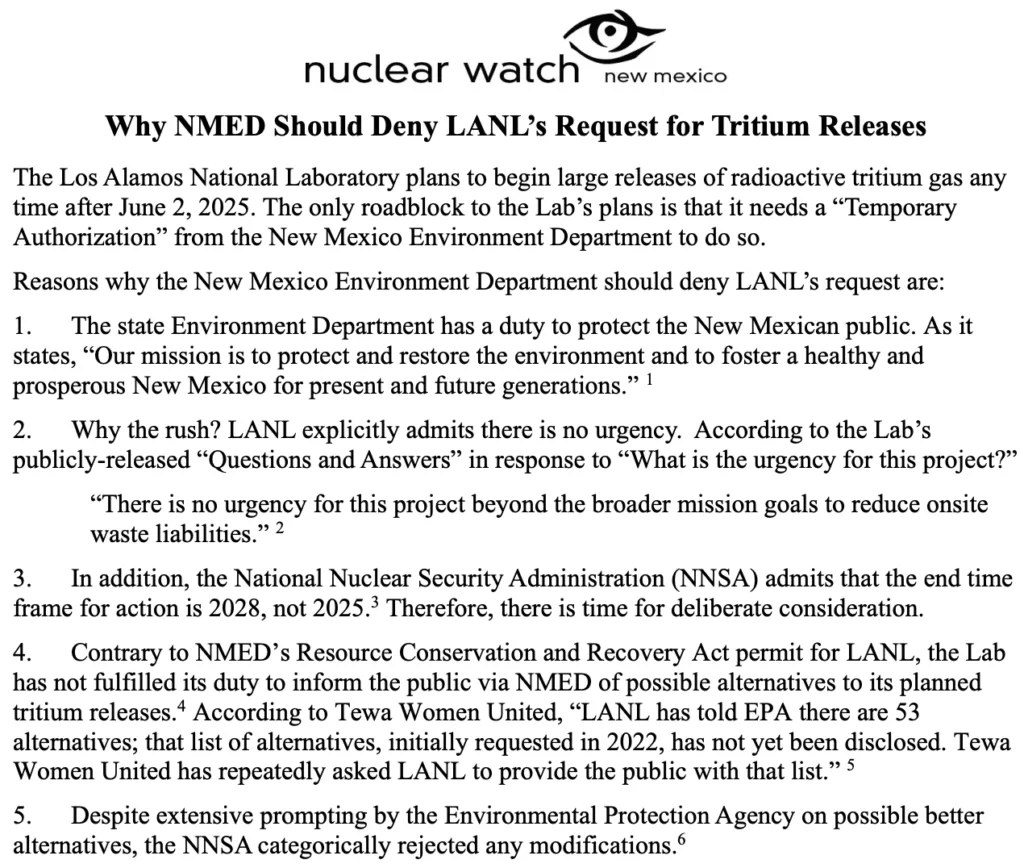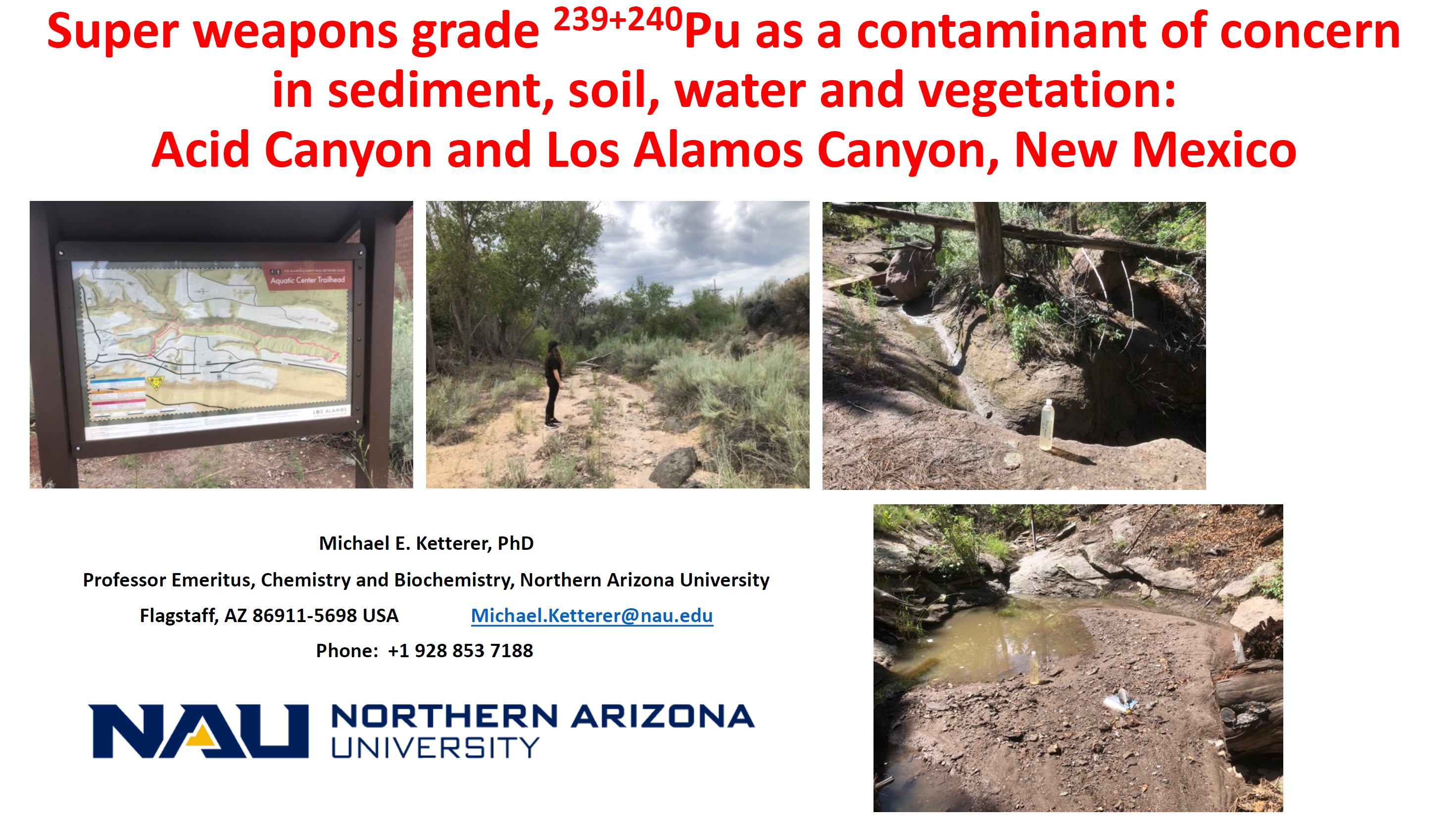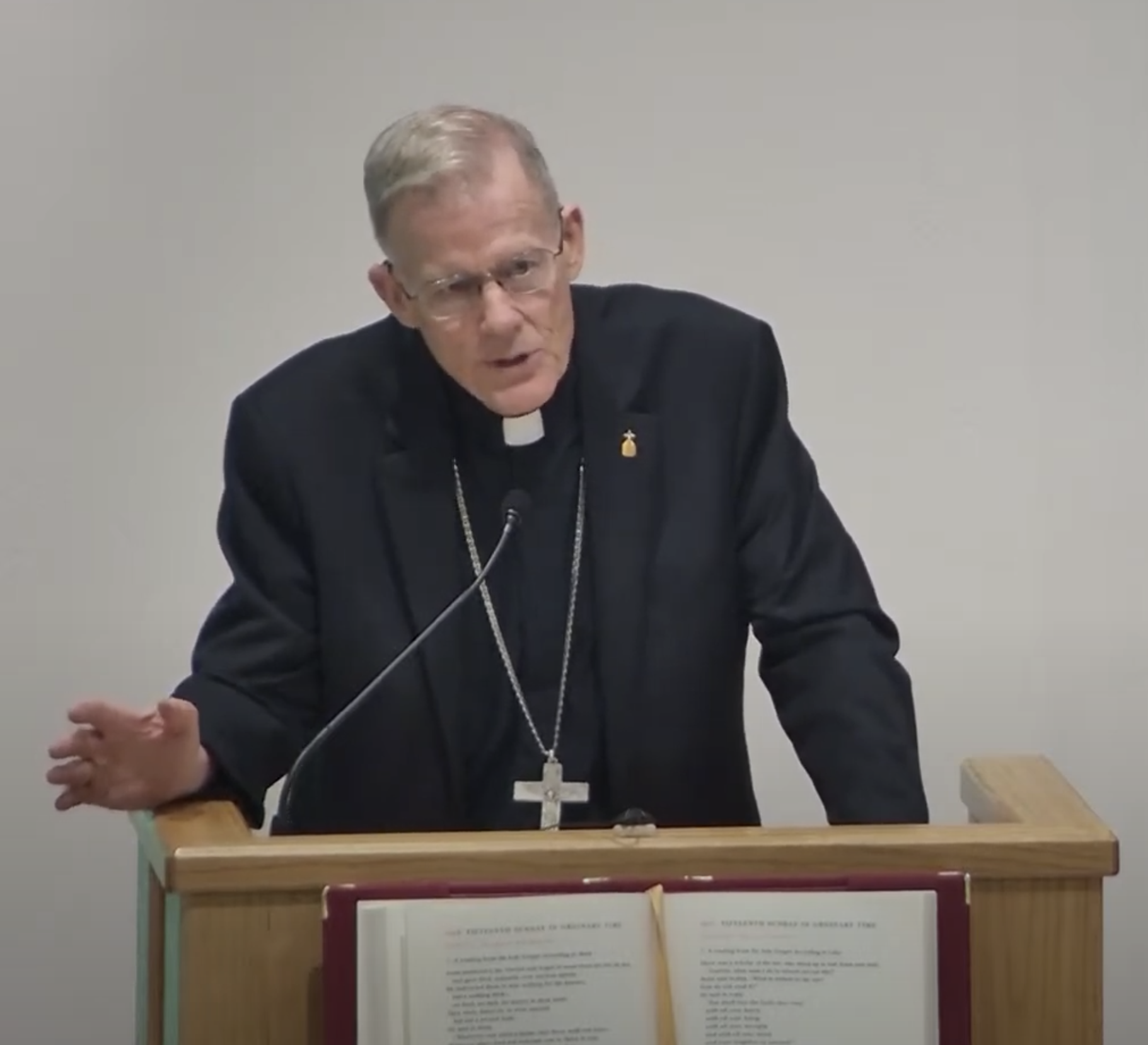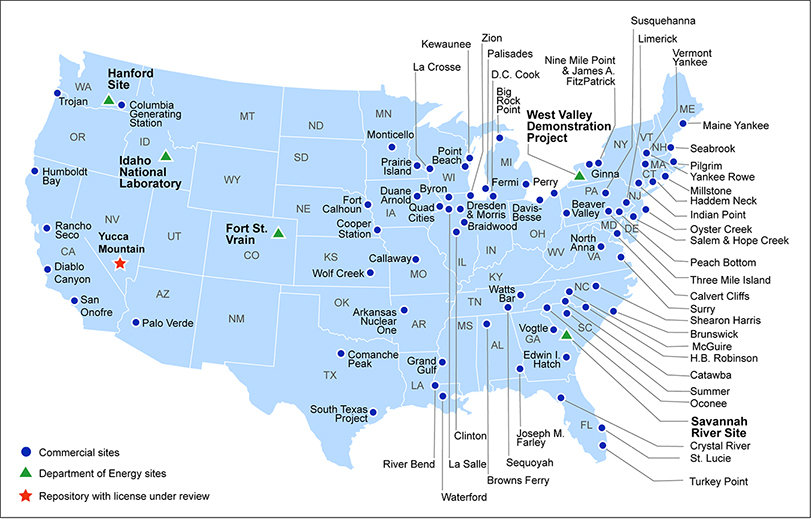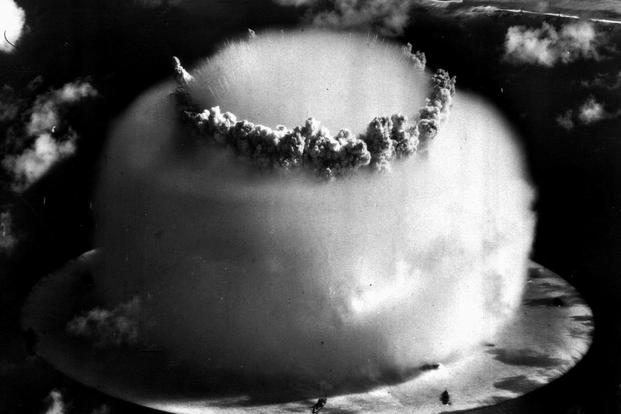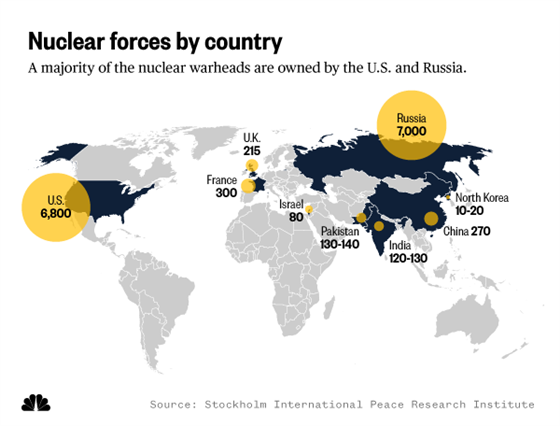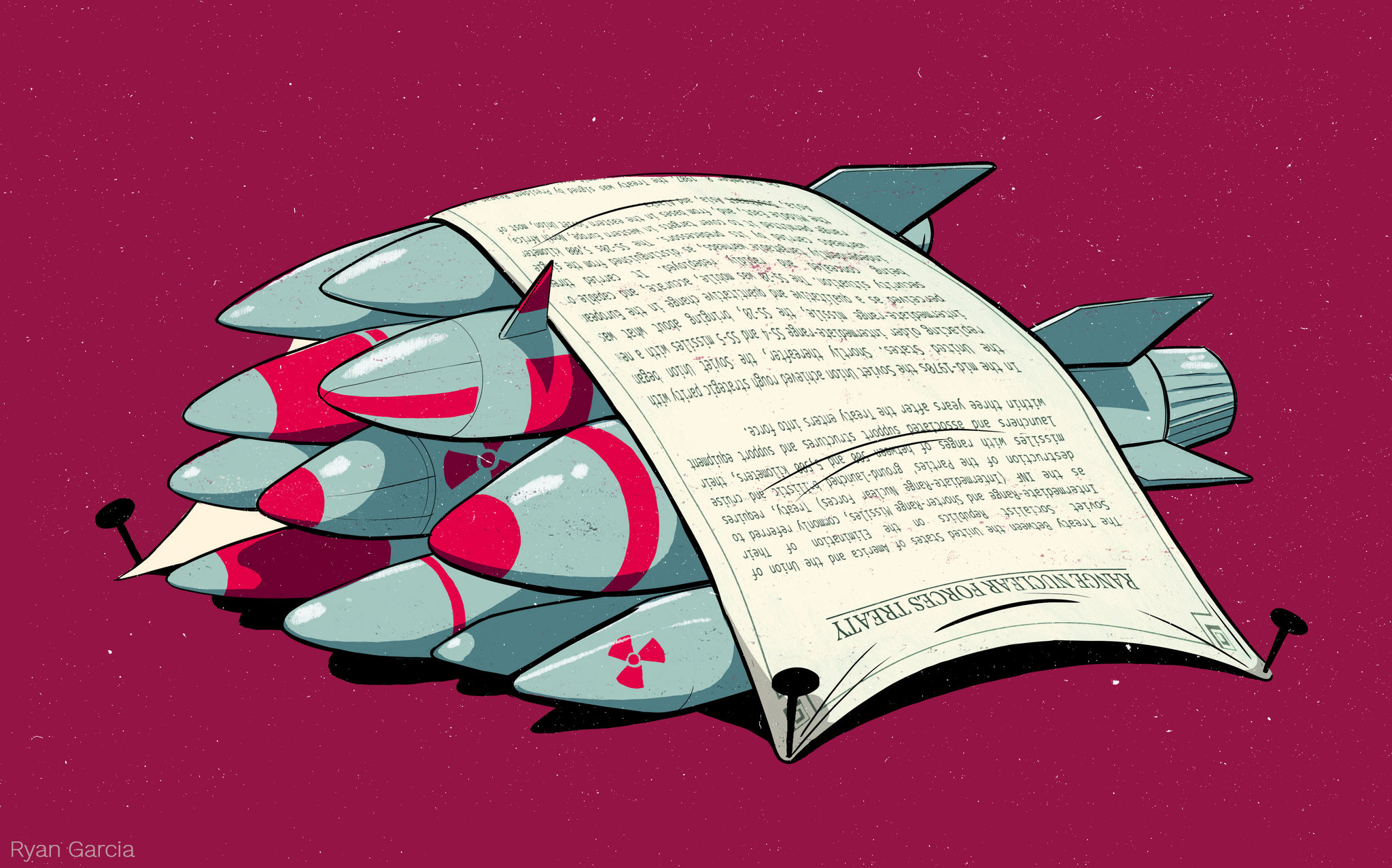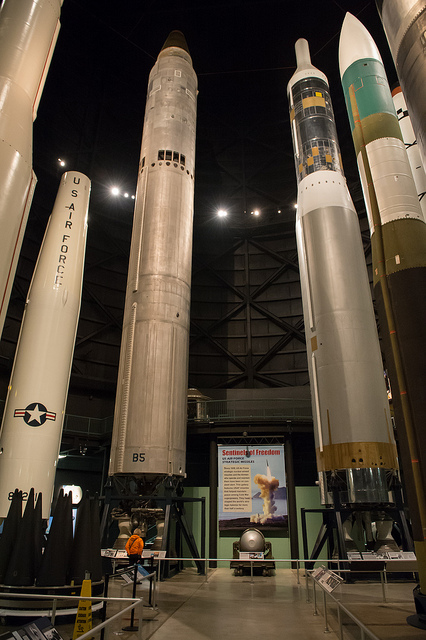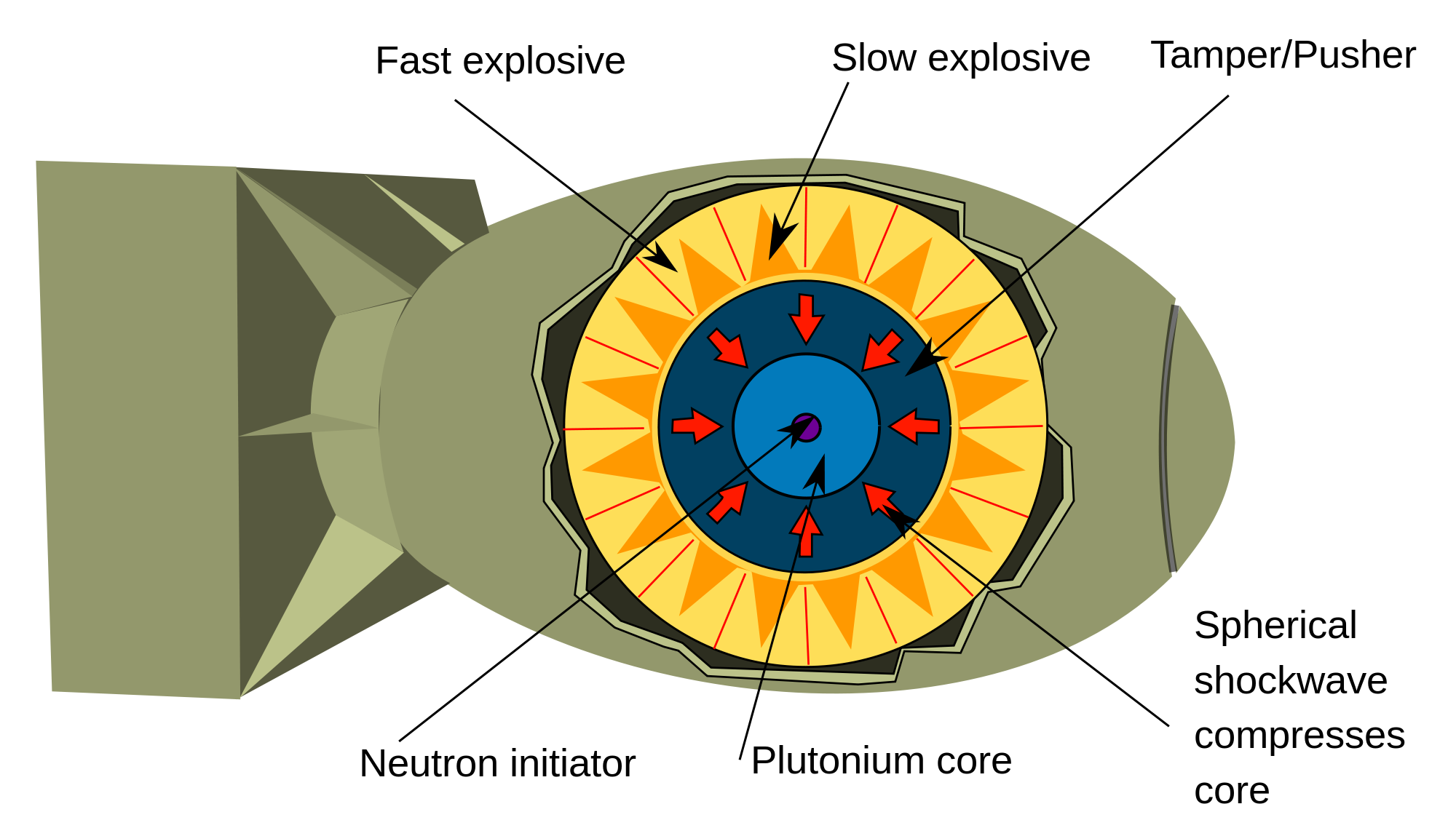2020
Lawsuit Compels Nationwide Public Review of Plutonium Bomb Core Production
AIKEN, S.C. — Today the National Nuclear Security Administration (NNSA), the semi-autonomous nuclear weapons agency within the Department of Energy, published a formal Notice of Intent in the Federal Register to complete a nationwide “programmatic environmental impact statement” on the expanded production of plutonium “pit” bomb cores. Pits are the essential radioactive triggers of modern nuclear weapons. The NNSA is aggressively seeking their expanded production for new-design nuclear weapons for the new nuclear arms race.
The South Carolina Environmental Law Project (SCELP) successfully represented the Gullah/Geechee Sea Island Coalition and Nuclear Watch New Mexico, Savannah River Site Watch and Tri-Valley Communities Against a Radioactive Environment in a legal challenge to NNSA’s attempt to improperly jump start dual site pit production. On September 30, 2024, United States District Court Judge Mary Geiger Lewis ruled that the NNSA had violated the National Environmental Policy Act (NEPA) by failing to properly consider alternatives before proceeding with its plan to produce at least 30 pits per year at the Los Alamos National Laboratory (LANL) in New Mexico and at least 50 pits per year at the Savannah River Site (SRS) in South Carolina.
Full Video Recording: NukeWatch and Dr. Michael Ketterer Present Results from Recent Sampling for Plutonium Contamination Around the Los Alamos National Lab
The Trinity and nuclear bombs have nothing to do with each other
“Oppenheimer called it the Trinity Test [based] on John Donne’s poem, with the Christian reference – but that’s got to be, in my mind, the ultimate oxymoron. The Trinity and nuclear bombs have nothing to do with each other – the Trinity represents life and community, love and tolerance and respect for one another, and atomic weapons are the exact opposite of that.
So we’ve got to do all we can to rid ourselves of this destructive power, and that’s why people of faith are involved in this important matter.”
– Archbishop of Santa Fe, John C. Wester
Leave Nuclear to the Sun: Solar Energy & Renewables are the Source of the Future
The nuclear energy industry has had a fraught year. Well…I mean, haven’t we all…But still, it’s pleasantly surprising to see such a looming giant begin to wither and fall. The nuclear power industry is failing, as evidenced not only by the alarming reports of fraud, corruption, and other fiascos that occurred at multiple nuclear facilities over the course of 2020, but also by the numbers that prove renewables are simply better for ALL of our futures – not just the nuclear business moguls our taxpayer dollars so generously continue to bail out.
Solar to be No. 1 in US for new 2021 electricity generating capacity
Bombs Away: Weapon Systems That Biden Administration Could Curtail or Retire
Here are some of weapons that might be reviewed by the president-elect
By: Michael R. Gordon | Wall Street Journal
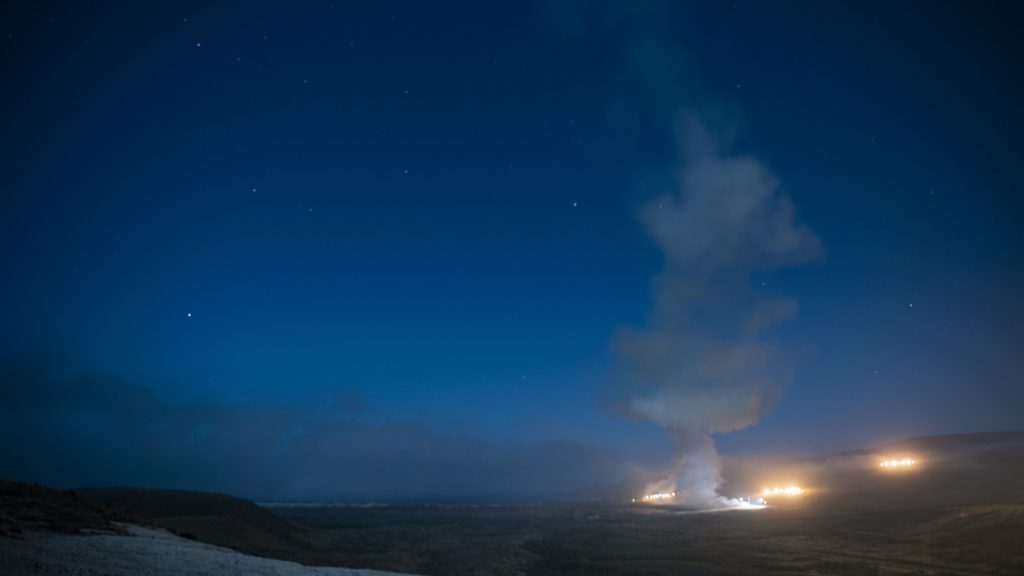
President-elect Joe Biden has said that he will reduce “excessive” expenditures on nuclear modernization. The Congressional Budget Office estimated in 2017 that the Pentagon’s plans for updating and sustaining the nuclear triad of air, sea and land-borne weapons would cost $1.2 trillion, and some lawmakers say the eventual cost might exceed $1.5 trillion. Here are some of the weapons that might be reviewed.
Continue reading
DOE Publishes Reactor Impact Statement
“Given that no clear mission need has been established for the VTR and with an estimated price tag of $3 billion to $6 billion, with completion ranging from 2026 to 2030, it is doubtful if the project will go forward..Just as for other costly, complex DOE projects, the price tag is certain to grow and the schedule certain to slip if the project is pursued.” — Savannah River Site Watch
By: NATHAN BROWN nbrown@postregister.com
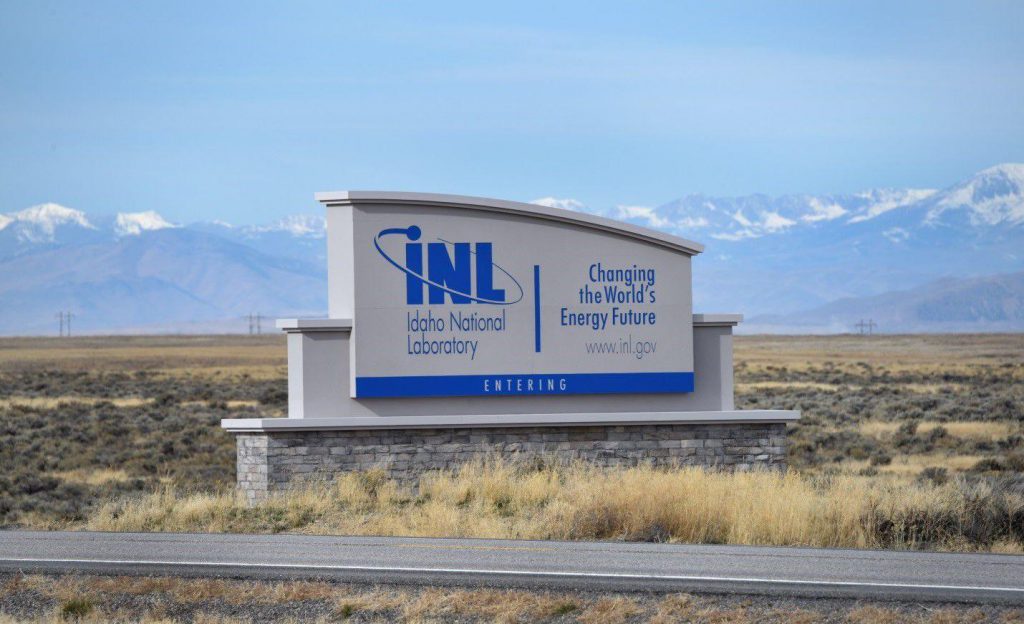
The U.S. Department of Energy has released the draft environmental impact statement for a test reactor it would like to build at Idaho National Laboratory.
The statement on the Versatile Test Reactor was released Monday and is available online through the Office of Nuclear Energy’s website, energy.gov/ne/office-nuclear-energy. Public comment will conclude 45 days after the federal Environmental Protection Agency publishes notice in the Federal Register, which is expected to happen on Dec. 31. DOE will then hold two virtual public hearings, dates to be announced.
Continue reading
DOE Awards Savannah River National Laboratory Management and Operating Contract
Cincinnati – Today, the U.S. Department of Energy (DOE) Office of Environmental Management (EM) awarded the Savannah River National Laboratory (SRNL) Management and Operating (M&O) contract to Battelle Savannah River Alliance, LLC (BSRA) of Columbus, OH.
The Cost-Plus-Award-Fee contract will include a 5-year base period (inclusive of 120 day transition period) and potential award terms of up to 5 more years, for a total period of up to 10 years. The anticipated contract value is approximately $3.8 billion over the potential 10-year period of performance.
The procurement was competed as a full-and-open competition, and EM received three proposals. The Department determined the BSRA proposal provided the best value to the Government considering Laboratory Vision, Key Personnel, Management and Operations, Past Performance, Transition Plan, and Cost and Fee.
Actual amount of radioactive contamination caused by the March 2011 Fukushima Daiichi Nuclear Power Plant accident, as revealed by Japanese citizen scientists
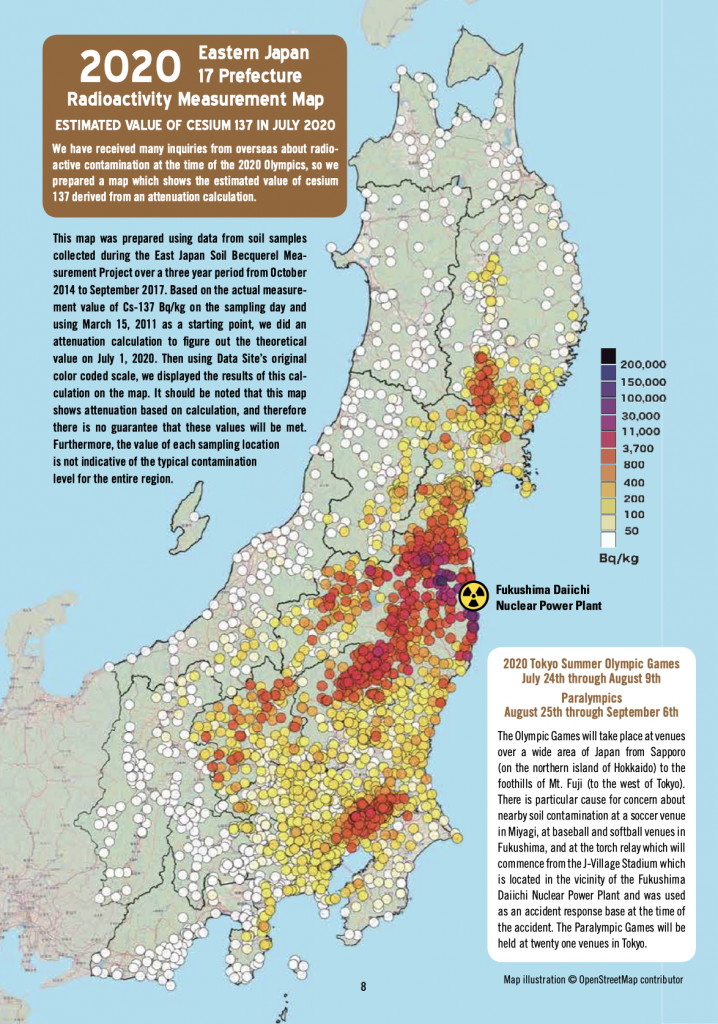
As a result of this investigation, [Minna-no Data Site] determined that the radioactive contamination was by no means limited to Fukushima Prefecture and that one hundred years from now there will still be several highly-contaminated areas where humans should not live.
Uninhabitable: Booklet by Citizen Scientists Uncovers True Extent of Radioactive Contamination in Japan’s Soil and Food
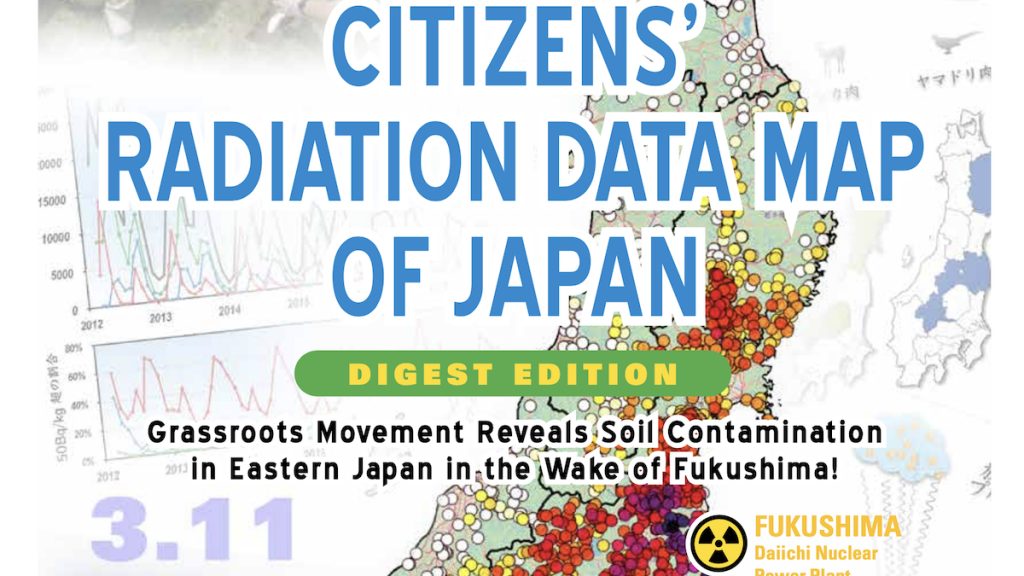
“As a result of this investigation, we determined that the radioactive contamination was by no means limited to Fukushima Prefecture and that one hundred years from now there will still be several highly-contaminated areas where humans should not live.
Now, eight years after the accident, not only has the government yet to establish a criterion for radioactive concentration in the soil, but the authorities are continuing to enforce the policy of compelling people to return to their homes if the air dose rate goes below 20 mSv/year.”
By: beyondnuclearinternational
From Minna-no Data Site, a citizen’s collaborative radioactivity monitoring project
Minna-no Data Site (Everyone’s Data Site) is a network of 30 citizens’ radioactivity measurement laboratories from all over Japan.
After the 2011 Fukushima accident, many independent citizen-operated radioactivity measurement laboratories sprang up across Japan.
In September 2013, a website called “Minna-no Data Site” was established in an effort to integrate all of the radioactivity measurement data into a common platform and disseminate accurate information in an easy-to-understand format.
As We Head Into the New Year…
|
The world’s first “smart” nuclear bomb. But…isn’t the truly smartest thing to have a world with no nuclear bombs?
B61-12 full-weapon system demonstration at Tonopah Test Range
Facing Widespread Opposition, Feds Withdraw Nuke Waste Plan
“Some commenters said the NRC should have launched a more thorough process for making new rules instead of simply trying to reinterpret existing rules, while others said the plan should have included a process where the public could help decide whether nuclear waste would be allowed at a particular disposal site.”
BY: TRAVIS BUBENIK | courthousenews.com Dec 17, 2020
(CN) — Federal regulators are withdrawing a nuclear waste proposal that had prompted an unusually widespread chorus of opposition, including from those who worried the plan could have led to radioactive waste being shipped to local landfills across the U.S.
The proposal centered on what’s commonly referred to as “very low-level” waste, which includes things like contaminated construction debris or soil from shuttered nuclear power plants.
Under the plan, the Nuclear Regulatory Commission would have reinterpreted rules on that kind of waste so that disposal facilities without specific licenses to handle the waste could have taken it in anyways through an exception.
The proposal sparked a wave of pushback from an unlikely alliance of state regulators, environmental groups and even a prominent company in the business of nuclear waste management.
LANL contractor hits first goal in toxic waste cleanup projects
“N3B is going after the low-hanging fruit, cleaning up less than 2,000 cubic yards of contaminated dirt,” said Jay Coghlan, executive director of Nuclear Watch New Mexico. “Let’s hear their plan for cleaning up 200,000 cubic yards of radioactive and toxic wastes at Area G that are already migrating towards our irreplaceable groundwater.”
Coghlan said N3B touting this small part of the cleanup smacks of “propaganda to promote the toothless 2016 consent order.”
BY: Scott Wyland swyland@sfnewmexican.com| Santa Fe New Mexican Dec 16, 2020
Los Alamos National Laboratory’s contractor in charge of cleaning up radioactive waste produced during the Cold War and Manhattan Project has completed its first goal under a 2016 agreement.
Newport News Nuclear BWXT, also known as N3B, finished removing almost 1,800 cubic yards of contaminated soil and debris from four sites in Upper Mortandad, Upper Cañada del Buey and Threemile canyons.
Crews packed and shipped the material to a disposal site in Clive, Utah.
“Cleanup of these sites ultimately protects human health by eliminating the likelihood that contamination will reach the water system through stormwater runoff,” Brenda Bowlby, head of N3B’s soil remediation program, said in a statement.
Removing the toxic debris also protects the area’s wildlife, she added.
The cleanup project was one of 17 that N3B aims to do under the 2016 agreement between the U.S. Department of Energy and the state Environment Department.
Critics say Turkey’s unfinished nuclear plant already redundant
Turkey’s power plant building spree has resulted in an enormous idle capacity but the construction of new plants continues at the expense of taxpayers despite the country’s bruising economic woes.
BY: Thomas H. Goebel The Conversation | almonitor.com
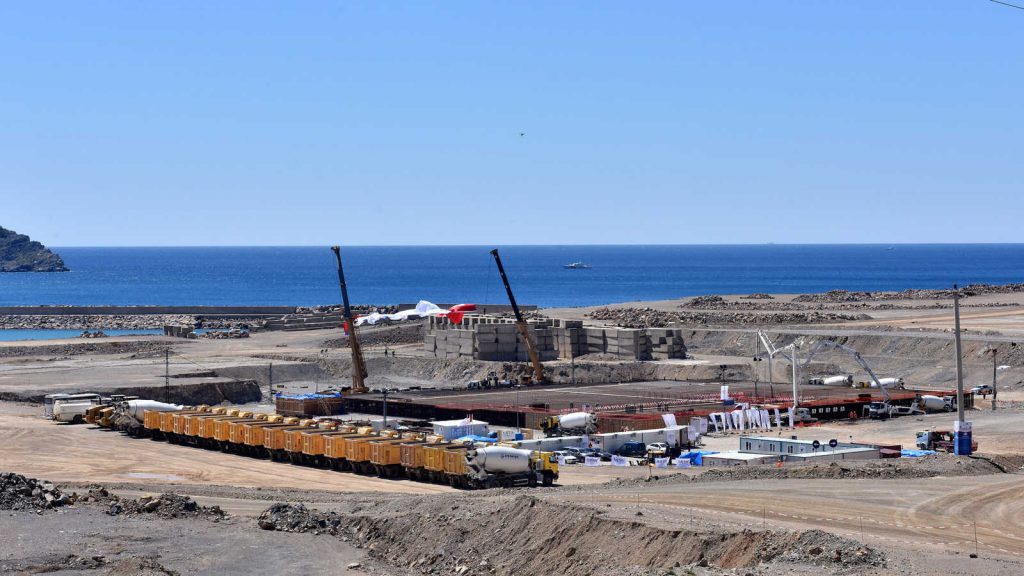
Turkey’s ruling Justice and Development Party (AKP), in power for 18 years, is under increasing fire for poorly planned, prodigal investments whose long-term financial fallout is coming into sharper relief as the country grapples with severe economic woes. Standing out among the most dubious investments is a series of power plants, including a nuclear energy plant still under construction, that have created an idle capacity threatening to haunt public finances for years.
East Coast nuke plants prepare to send waste to New Mexico via Holtec project
East coast nuclear power plants are getting ready to send their waste to southeast New Mexico as they are shut down.
BY: Adrian Hedden Carlsbad Current-Argus
Holtec International recently acquired licenses to decommission multiple plants as it proceeds through a licensing process to build and operate a facility to temporary store spent nuclear fuel rods near the Eddy County-Lea County line.
The ongoing license application for the first phase of the project before the federal Nuclear Regulatory Commission (NRC), would allow Holtec to store 500 cannisters at the site –or about 8,000 metric tons – of spent fuel, but the company expects up to 20 more phases as capacity is needed.
The fuel would be transported via rail from generator sites from across the U.S. to be stored in New Mexico until a permanent repository is operational.
Public Comment Period Open until Feb. 1, 2021 – Environmental Impact Statement (EIS) for the Surplus Plutonium Disposition Program (SPDP):
NNSA issues Notice of Intent to prepare Environmental Impact Statement for Surplus Plutonium Disposition Program
“In light of the current COVID-19 pandemic, an online scoping meeting will be held in place of an in-person meeting. The online public scoping meeting is tentatively scheduled for the end of January 2021. The information and details on how to participate in the online public scoping meeting and submit comments will be provided in a future notice posted on the NNSA National Environmental Policy Act (NEPA) Reading Room website (https://www.energy.gov/nnsa/nnsa-nepa-reading-room) and will also be published in local newspapers. Any necessary changes will be announced in the local media and on the NNSA NEPA Reading Room website.”
‘Highly skeptical’: House Armed Services chairman concerned about SRS pit production
Smith’s doubts are neither new nor uncommon. And they cast a dark shadow over what many in Aiken County see as a jobs jackpot, among other things.
BY: Colin Demarest cdemarest@aikenstandard.com | postandcourier.com
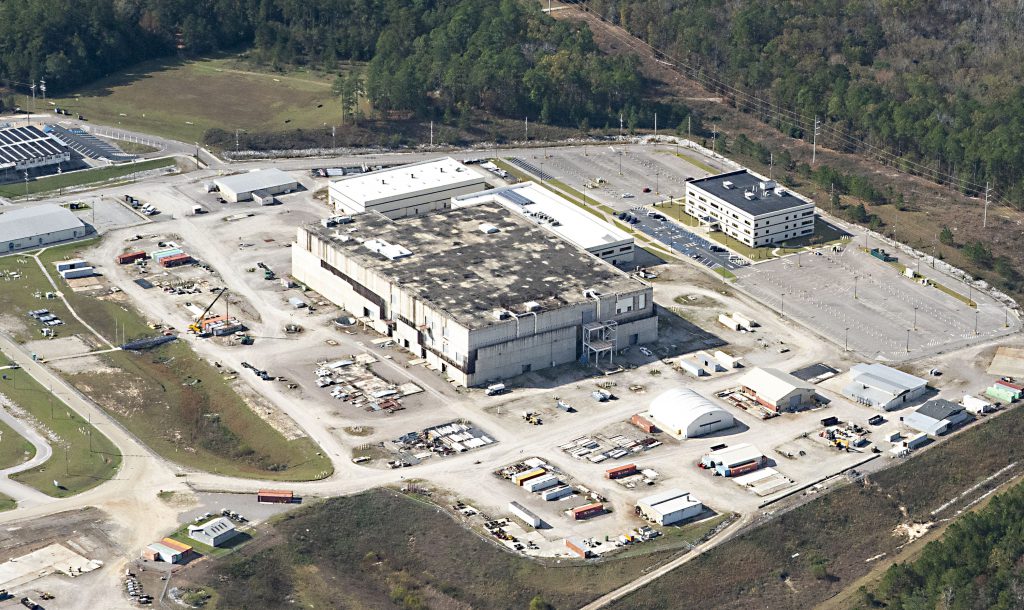
Photo courtesy of High Flyer
In blunt, if not damning, remarks at a Friday event, the chairman of the House Armed Services Committee expressed serious reservations about plutonium pit production at the Savannah River Site and questioned the competency of the National Nuclear Security Administration, overall.
Likening the conversion of the failed Mixed Oxide Fuel Fabrication Facility to flipping a bowling alley into a restaurant, U.S. Rep. Adam Smith said he was “highly skeptical that they’re going to be able to turn that building into an effective pit production facility. Highly skeptical.”
John Pilger: The Most Lethal Virus is Not Covid-19. It is War.
Covid-19 has provided cover for a pandemic of propaganda, says John Pilger.
BY: John Pilger | consortiumnews.com
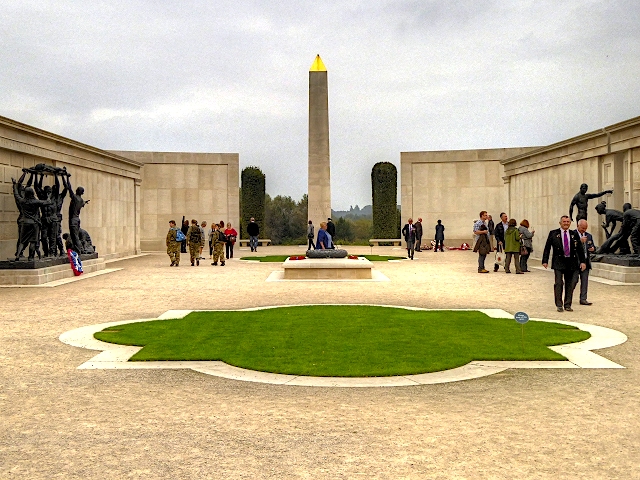
Britain’s Armed Services Memorial is a silent, haunting place. Set in the rural beauty of Staffordshire, in an arboretum of some 30,000 trees and sweeping lawns, its Homeric figures celebrate determination and sacrifice.
The names of more than 16,000 British servicemen and women are listed. The literature says they “died in operational theatre or were targeted by terrorists”.
On the day I was there, a stonemason was adding new names to those who have died in some 50 operations across the world during what is known as “peacetime”. Malaya, Ireland, Kenya, Hong Kong, Libya, Iraq, Palestine and many more, including secret operations, such as Indochina.
Rising Resistance to Supporting the US War Budget: The House and Senate Leaders Who Voted Against War
December 14th, 2020 – by Gar Smith / Environmentalists Against War

(December 13, 2020) — On December 8, Congress voted on H.R. 6395, the House version of National Defense Authorization Act. This year’s NDAA — approaching three-quarters of $1 trillion — consumes more than half of the nation’s entire discretionary budget. The NDAA included a 3 percent increase in military pay. That is more than double the 1.3 percent Cost of Living Increase granted to retired civilians.
Typically, a vote on funding the Pentagon passes with near-unanimity. Not so this year. According to House Roll Call 238, 78 Representatives cast a “Nay” vote for passing the Pentagon’s $740 billion budget. The bill was supported by 140 Republicans and 195 Democrats. More Republicans (40) voted against the massive spending bill than Democrats (37)
Chairman of House Armed Services Committee Reveals Great Skepticism in NNSA’s Ability to Covert SRS MOX Facility to Plutonium Pit Production, Refers to $6 Billion Project as Potential “Rat Hole”
Savannah River Site Watch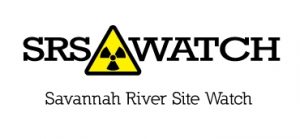 https://srswatch.org/
https://srswatch.org/
Columbia, South Carolina USA For Immediate Release December 14, 2020
The powerful chairman of the House Armed Services Committee, Representation Adam Smith, has raised great doubt about the U.S. Department of Energy’s ability to pull off the project at the Savannah River Site (SRS) in South Carolina to produce plutonium “pits,” or cores, for nuclear warheads.
In an online presentation on December 11 with the Center for Strategic and International Studies, Rep. Smith (D-WA) expressed deep concern in the ability of the DOE’s National Nuclear Security Administration (NNSA) to pull off the project to convert the partially finished plutonium fuel (MOX) plant, halted in 2017, into the proposed Plutonium Bomb Plant (PBP) at SRS. The event featured Rep. Smith talking about nuclear weapons matters coming before Congress in 2021. The transcript of the event was released late in the afternoon of December 11.
Continue reading
Kairos Power test reactor comes to repurposed Oak Ridge site
Kairos Power plans to site a test reactor it has dubbed Hermes at the East Tennessee Technology Park (ETTP) in Oak Ridge, Tenn.
BY: ANS Nuclear News Staff | ans.org
The company has executed a Memorandum of Understanding with Heritage Center, LLC, to acquire the former K-33 gaseous diffusion plant site at ETTP, subject to ongoing due diligence evaluations. The announcement was made today, during the 2020 East Tennessee Economic Council Annual Meeting and Awards Celebration.
“We are thrilled at the prospect of coming to East Tennessee,” said Michael Laufer, cofounder and chief executive officer of Kairos Power. “The infrastructure available at ETTP, combined with its proximity to key collaborators at the Oak Ridge National Laboratory, makes this a great location to demonstrate our technology. The successful commissioning of Hermes builds on our current technology development programs and extensive engagement with the U.S. Nuclear Regulatory Commission. Ultimately, Hermes will prove that Kairos Power can deliver real systems at our cost targets to make advanced nuclear a competitive source of clean energy in the United States.”
Lou Martinez, vice president of strategy and innovation, added, “Today is an important day for Kairos Power. We are celebrating our 4th anniversary by showcasing an important milestone.”
UT, Texas A&M Systems hope to manage Y-12 National Security Complex and the Pantex Plant
Texas A&M is part of Triad National Security, LLC (Texas A&M, U. of California and Battelle), and is currently already managing the Los Alamos Lab.
By: Monica Kast | Knoxville News Sentinel
The University of Tennessee System and the Texas A&M University System have announced plans to compete as a team for a bid that would allow them to manage and operate both the Y-12 National Security Complex and Pantex Plant.
If the bid is accepted, the schools would join a team that would manage and operate both Department of Energy facilities, which manufacture, store and monitor the nation’s nuclear weapons.
Both universities currently partner with the plants in their state and provide “extensive workforces for the plants,” UT said in a news release.
Russian Ambassador to U.S. Sees Hope for Nuclear Arms Treaty Extension
Antonov termed the 11-year-old START treaty “the gold standard of arms control agreements.”
BY: John Grady | news.usni.org
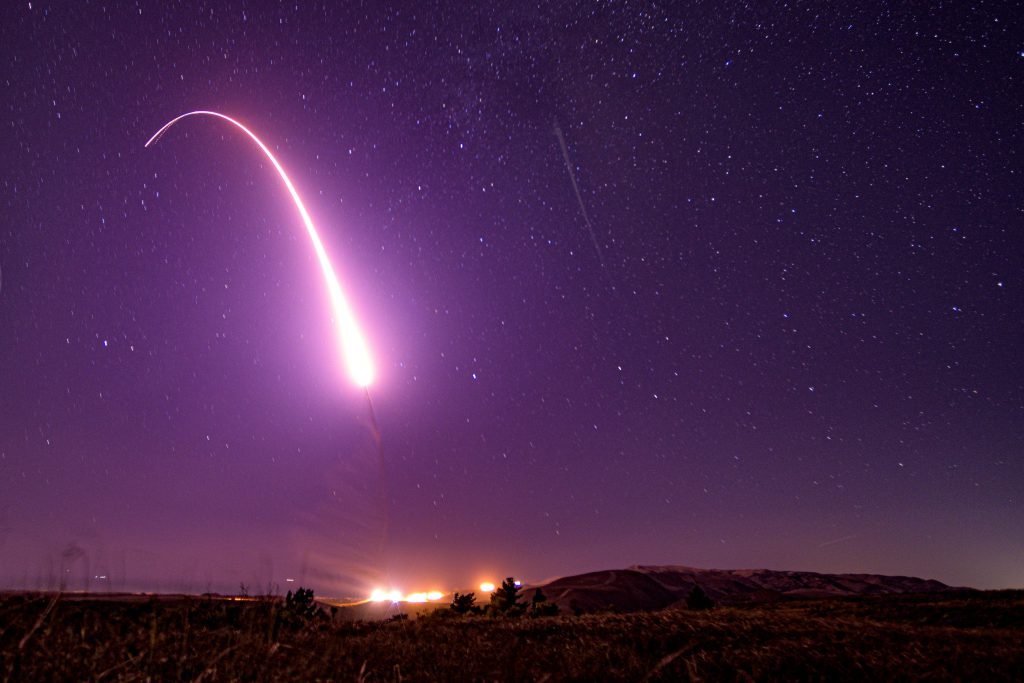
The Russian ambassador to the United States said there is still time to extend the Strategic Arms Control Treaty, due to expire in early February, even despite the upcoming presidential transition.
Anatoly Antonov, whose diplomatic career largely has been spent focused on major arms control issues, said the START treaty is a “key issue” for Russia. “We have time; we can get it done very quickly.” Speaking at a Brookings Institution online forum last week, he added, “we are in close contact with Marshall Billingslea,” the Trump administration’s top envoy on arms control.
Defying Trump, House Approves Defense Bill with Veto-Proof Majority
Cheney touted the bill’s support for nuclear triad modernization and its inclusion of a new a new fund to deter China in the Pacific, adding that it “builds on the Trump administration’s successful efforts to counter the Chinese Communist Party.”
BY: Joe Gould | defensenews.com
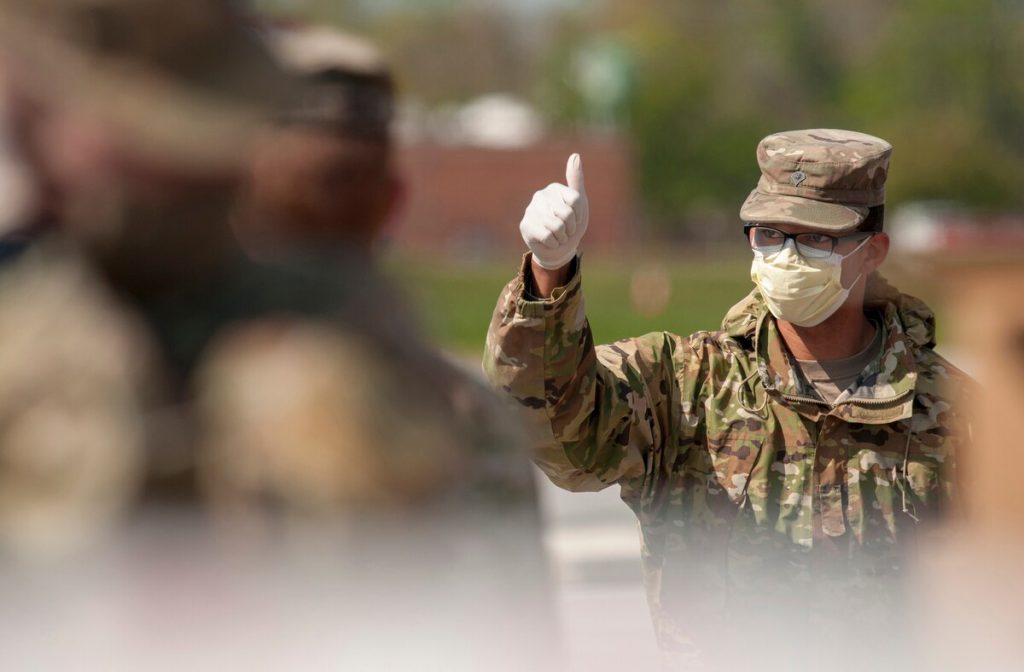
WASHINGTON ― The House adopted a compromise $740.5 billion defense policy bill by a veto-proof majority Tuesday, rebuking President Donald Trump, who threatened to send back the bill because it doesn’t repeal a prized liability shield for social media firms.
Republican and Democratic supporters hoped for a strong vote in hopes it would back Trump down, and they got it. The vote was 355-78 for the 2021 National Defense Authorization Act, a blueprint for next year’s spending on military and other national security programs.
While Democrats voted overwhelmingly for the bill, 40 Republicans disregarded Trump’s objections and joined Democratic lawmakers in passing the legislation. Another 37 Democrats voted against it.
Sandia National Labs to Test Nuclear Waste Storage Containers
“[Data] is needed to confirm and guide how the industry should manage storage canisters for longer than anticipated.
‘Salt can be present in the ambient air and environment anywhere, not just near the ocean. We need to be able to plan for extended long-term storage of spent nuclear fuel at nuclear power plants for the foreseeable future – it’s a national reality,’”
BY: KRQE Staff | krqe.com
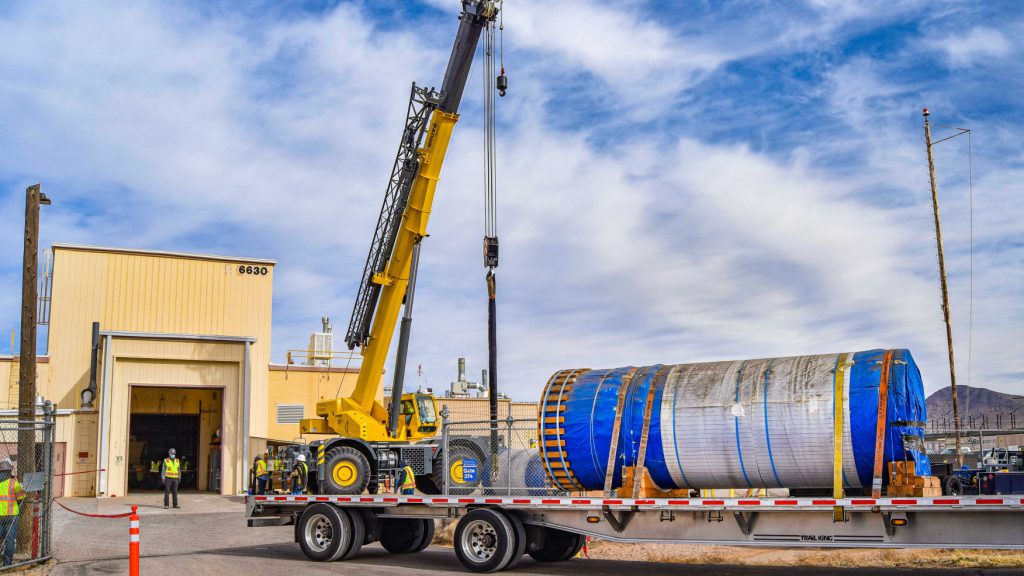
ALBUQUERQUE, N.M. (KRQE) – Sandia National Laboratories reports that it is equipping three 22.5-ton stainless steel storage containers with heaters and instrumentation in order to simulate nuclear waste so that researchers can study their durability. According to Sandia National Labs, the three, 16.5 feet long canisters arrived in mid-November and will be used to study how much salt gathers on canisters over time.
Researchers will also study the potential for cracks that are caused by corrosion induced by salt and stress. Sandia reports that currently, there is not an operating geologic repository in the United States to permanently dispose of spent nuclear fuel.
As a result, spent fuel is being stored at commercial nuclear power plants in storage pools and dry storage canisters.
US nuclear warhead standoff ‘has significant implications for UK’
Kingston Reif, a nuclear analyst at the Arms Control Association, said that he would expect Joe Biden’s incoming administration to take “a critical look” at the W93 programme. It was controversial because of the weak development rationale and that “the weapon would be the first newly designed warhead to enter the US stockpile since the end of the cold war”.
BY: Dan Sabbagh | theguardian.com/uk
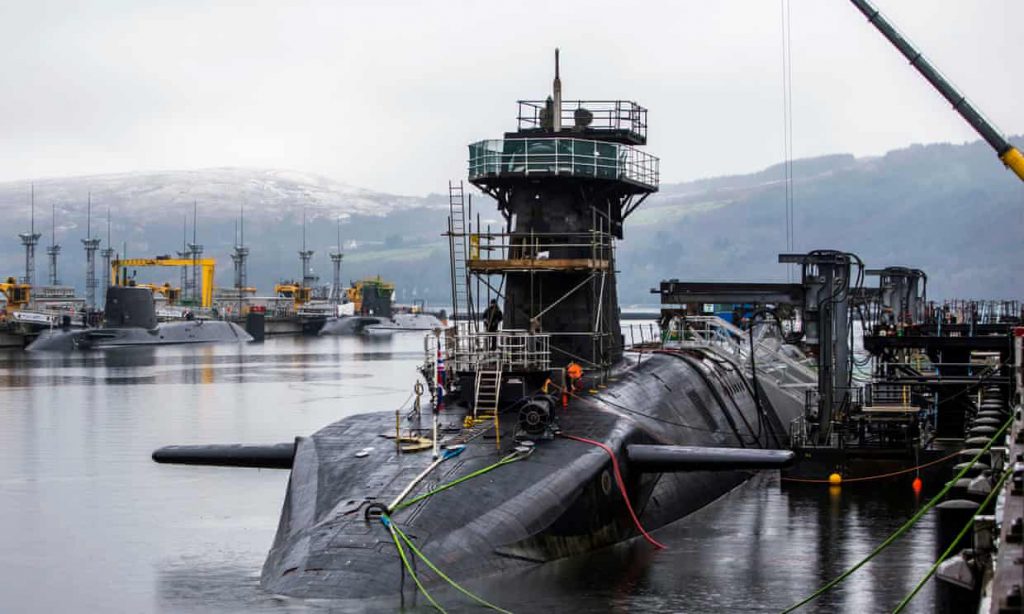
Britain’s most senior defence official admitted there would be “very significant implications” for the future of the Trident nuclear deterrent if Democrats in the US Congress refused to fund a next-generation warhead.
Sir Stephen Lovegrove, permanent secretary at the Ministry of Defence, said that the UK was monitoring the US standoff closely but could not say what impact a refusal to start work on the new W93 warhead would have – or how many billions it would cost.
British politicians and officials have, until now, had little to say about the long-running US row over the W93, crudely estimated to be twice as explosive as the ageing Trident warhead now used by the UK.
Peninsula Clean Energy board rejects PG&E nuclear credits
Peninsula Clean Energy board concerned over message more nuclear power sends to public
“I don’t like the idea of the nuclear on our label because it does kind of feel like a vote for it,” PCE Board Member Jeff Aalfs, said.
BY: Curtis Driscoll Daily Journal staff | smdailyjournal.com
Peninsula Clean Energy has accepted hydropower allocation credits but rejected similar ones for nuclear power from PG&E after the board expressed concern about associating with the controversial energy source but, in doing so, it will lose out of potential savings up to $10 million through 2023.
Allocations are offsetting credits given out by Pacific Gas and Electric because of the environmental benefits of hydro and nuclear powers emitting fewer greenhouse gases. Peninsula Clean Energy, or PCE, will use the hydro allocation credits to offset greenhouse gas emissions associated with system power in 2021, with plans to continue through 2023. PG&E holds the option to continue offering the credits in 2022 and 2023.
Continue reading
“If the military gets an illegitimate order from the president of the United States, the military can and should refuse that order in a situation where it is widely seen that the president is unfit and incapable of making a rational decision,”

— Pelosi’s talk of limits on Trump nuke power raises old worry Tom Z. Collina, co-author with former Defense Secretary William J. Perry of a book, “The Button,” about nuclear dangers and presidential command authority.
“…We’re in a storytelling crisis, and the kind of storytelling that we are talking about right now needs to be revved up to the nth degree. While we—those of us in the journalism and nuclear spaces—understand the gravity of where we are, and how dangerous our current global stockpile is, and that we have fewer means of communication for de-escalation than ever, the rest of the world isn’t getting it. And as the pandemic worsens, this issue is getting less and less attention”
— “We’re in a storytelling crisis”: Advice for writing on nuclear issues, from the author of “Fallout”
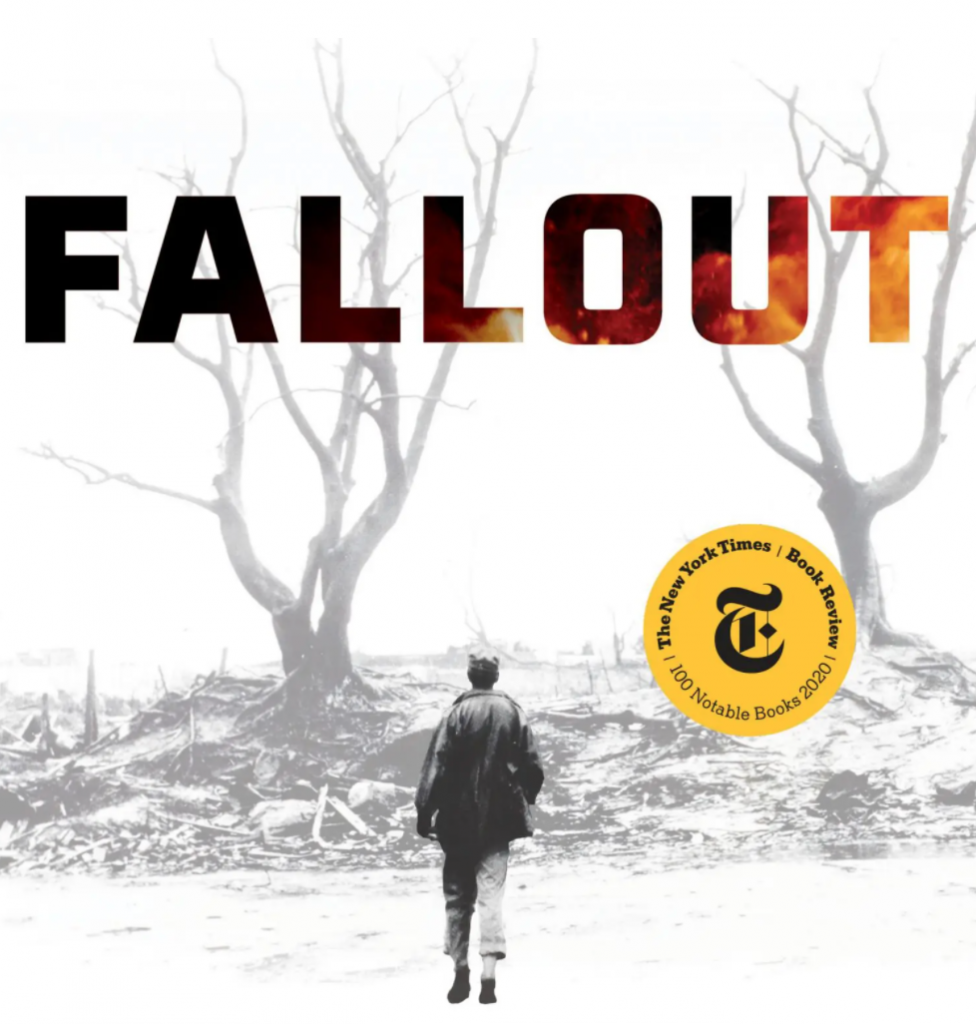
Rouhani: ‘No negotiations’ needed to restore Iran nuclear deal
“President Rouhani says Iran will return to its commitments that were part of the deal if other signatories do the same.”
BY: Maziar Motamedi | aljazeera.com

Tehran, Iran – Iran’s nuclear deal can be restored without negotiations despite recent escalations following the assassination of a top nuclear scientist, Iran’s President Hassan Rouhani has told world powers.
Rouhani said United States President Donald Trump “scribbled on a piece of paper” in May 2018, unilaterally withdrawing from the nuclear deal.
“The next person can put up a nice piece of paper and sign it and it just needs a signature, we’ll be back where we were. It takes no time and needs no negotiations,” Rouhani said in a televised cabinet speech on Wednesday.
New Aerial Photos Released of the Trio of Failed Nuclear Projects in South Carolina & Georgia: Plutonium Fuel/MOX (Proposed to be Converted into a Plutonium Bomb Plant) and the Vogtle & V.C. Summer Nuclear Reactor Construction Sites
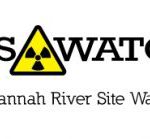 Savannah River Site Watch
Savannah River Site Watch
Columbia, South Carolina
https://srswatch.org/
November 30, 2020
Columbia, SC (aka new Nuclear Ground Zero) — Dramatic aerial photos of the massive nuclear construction projects in South Carolina and Georgia have been released by the public interest organization Savannah River Site Watch. The photos of the three failed projects, two of which have been formally terminated, were taken by a local anonymous pilot who goes by the nom de avion High Flyer.










Continue reading
Lawmakers Decide Against Nuclear Weapons Test Funding in Annual Defense Bill
Nuclear Watch New Mexico echoes the words from The Union of Concerned Scientists (UCS) in “applauding lawmakers for deciding not to authorize funds to prepare for the first U.S. nuclear weapons test in nearly three decades, an outcome UCS experts worked diligently to ensure because any move to resume explosive, underground nuclear weapons testing would undermine U.S. security.”
BY: Union of Concerned Scientists | ucsusa.org
Today, Congress released the conference report on the National Defense Authorization Act (NDAA). The Senate version had contained $10 million to lay the groundwork for a nuclear weapons test if the White House chose to move forward with one. The House took the opposite course, voting to prohibit funding for a nuclear test explosion in fiscal year 2021. The conference report includes neither provision.
“By refusing to give the test a green light, lawmakers are wisely avoiding the risk of an explosive nuclear test setting off a new round in the nuclear arms race,” said Dr. Laura Grego, senior scientist in the UCS Global Security Program.
A dozen premier American scientists with expertise on nuclear weapons issues sent a letter to Congress strongly opposing the resumption of explosive testing of U.S. nuclear weapons, saying it was unnecessary for technical or military reasons and that doing so would have negative security consequences for the United States.
How I Came to Support the Treaty Prohibiting Nuclear Weapons
“During my time serving in the Reagan administration, I came to realize that the only nuclear strategy we had was massive retaliation, which would have made the attacks on Hiroshima and Nagasaki seem almost trivial.”
BY: Lawrence Korb | justsecurity.org
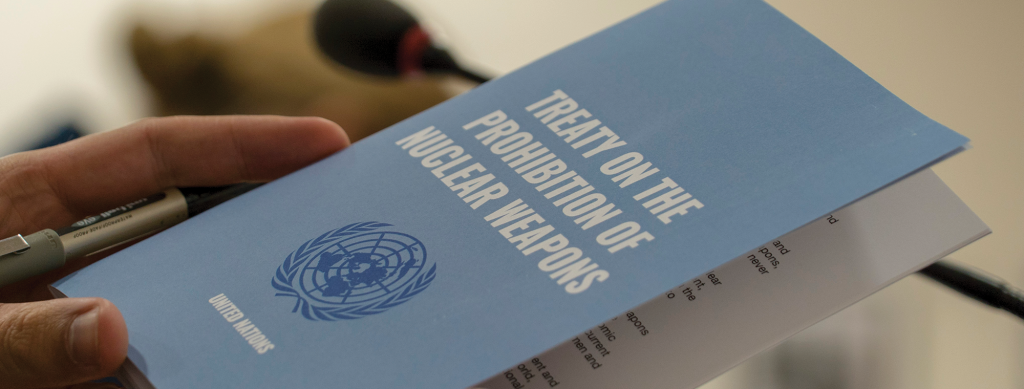
About three years ago, in November 2017, I was honored to be one of about a 100 people invited by the Vatican to an international symposium, “Prospects for a World Free of Nuclear Weapons and for Integral Disarmament.” It was the first global gathering conducted after 120 nations at the United Nations approved the Treaty on the Prohibition of Nuclear Weapons (TPNW).
This treaty, which is the first legally binding international agreement to comprehensively prohibit nuclear weapons, was adopted by the U.N. on July 7, 2017, and needed 50 countries to ratify it in order for it to come into force. The purpose for the treaty was to get world leaders and citizens to consider nuclear weapons as immoral and illegal as chemical and biological weapons, whose use the U.N had previously prohibited.
Pope Francis himself was very invested in the issue. He gave the keynote address in which he condemned not only the threat of their use, but also the possession of nuclear weapons and warned that nuclear deterrence policies offered a false sense of security. He also personally thanked each of the attendees individually.
Nuclear fiasco: SCANA ex-CEO to plead guilty to fraud, get prison, pay $5 million
Former SCANA CEO Kevin Marsh has agreed to plead guilty to federal conspiracy fraud charges, go to prison for at least 18 months and forfeit $5 million in connection with SCANA’s $10 billion nuclear fiasco, according to papers filed in the U.S. District Court in South Carolina.
2019
Lawsuit Compels Nationwide Public Review of Plutonium Bomb Core Production
AIKEN, S.C. — Today the National Nuclear Security Administration (NNSA), the semi-autonomous nuclear weapons agency within the Department of Energy, published a formal Notice of Intent in the Federal Register to complete a nationwide “programmatic environmental impact statement” on the expanded production of plutonium “pit” bomb cores. Pits are the essential radioactive triggers of modern nuclear weapons. The NNSA is aggressively seeking their expanded production for new-design nuclear weapons for the new nuclear arms race.
The South Carolina Environmental Law Project (SCELP) successfully represented the Gullah/Geechee Sea Island Coalition and Nuclear Watch New Mexico, Savannah River Site Watch and Tri-Valley Communities Against a Radioactive Environment in a legal challenge to NNSA’s attempt to improperly jump start dual site pit production. On September 30, 2024, United States District Court Judge Mary Geiger Lewis ruled that the NNSA had violated the National Environmental Policy Act (NEPA) by failing to properly consider alternatives before proceeding with its plan to produce at least 30 pits per year at the Los Alamos National Laboratory (LANL) in New Mexico and at least 50 pits per year at the Savannah River Site (SRS) in South Carolina.
Full Video Recording: NukeWatch and Dr. Michael Ketterer Present Results from Recent Sampling for Plutonium Contamination Around the Los Alamos National Lab
The Trinity and nuclear bombs have nothing to do with each other
“Oppenheimer called it the Trinity Test [based] on John Donne’s poem, with the Christian reference – but that’s got to be, in my mind, the ultimate oxymoron. The Trinity and nuclear bombs have nothing to do with each other – the Trinity represents life and community, love and tolerance and respect for one another, and atomic weapons are the exact opposite of that.
So we’ve got to do all we can to rid ourselves of this destructive power, and that’s why people of faith are involved in this important matter.”
– Archbishop of Santa Fe, John C. Wester
“The Pacific was victimized in the past as we all know by the scores of nuclear weapons tests above ground, on the ground and underwater in the Marshalls. The consequences of these have been quite dramatic, in relation to health, in relation to the poisoning of waters in some areas,”
– United Nations Secretary General Antonio Guterres
Congress Directs Repairs to Nuclear Waste ‘Coffin’ Left Over from Atomic Bomb Tests
Congress has taken notice of the otherworldly concrete dome on a spit of coral in the central Pacific that serves as a massive radioactive trash can for doomsday weapons waste.
ARTICLE BY: RICHARD SISK | military.com
NEPA transformed federal land management — and has fallen short
A look back at the ground-breaking legislation on its 50th anniversary.
BY: ADAM M. SOWARDS | defenseone.com

In late January 1969, a blowout on Unocal’s Platform A leaked 3 million gallons of crude oil into the Pacific Ocean, just 6 miles from Santa Barbara, California. The spill — at the time, the largest in U.S. history — spread over 800 square miles, coated 8 miles of beaches and killed thousands of animals. Images of the devastation shocked a public increasingly worried about the environment and helped spur Congress to pass a sweeping law aimed at preventing similar disasters in the future — the National Environmental Policy Act.
President Richard Nixon signed NEPA into law on Jan. 1, 1970, from his home office on the Pacific Coast. The signing was a fitting launch for the environmental decade of the 1970s — a time when “America pays its debt to the past by reclaiming the purity of its air, its waters, and our living environment,” as Nixon said in his signing statement. “It is literally now or never.”
Reckoning with History is an ongoing series that seeks to understand the legacies of the past and to put the West’s present moment in perspective.
Sanders Calls Out ‘Deficit Hawks’ in Both Parties Who Support $738 Billion Pentagon Budget But Claim US Can’t Afford Medicare for All
“When it comes to giving the Pentagon $738 billion—even more money than it requested—there is a deafening silence within Congress and the ruling elites about what our nation can and cannot afford.”
ARTICLE BY JAKE JOHNSON | commondreams.org
In a scathing op-ed for the Washington Post Tuesday, Sen. Bernie Sanders took aim at Republican and Democratic “deficit hawks” who claim the U.S. cannot afford to guarantee healthcare to all, make higher education tuition-free, or fund other crucial domestic priorities but have no issue with voting to hand the Pentagon $738 billion.
“When it comes to giving the Pentagon $738 billion—even more money than it requested—there is a deafening silence within Congress and the ruling elites about what our nation can and cannot afford.” — Sen. Bernie Sanders
A Gateway to Nuclear Catastrophe: Democrats Retreat on Nuclear Policy
The 2020 authorization bill fails to check Trump’s worst impulses. Over 30 progressive national security organizations sent a letter to Congress opposing the final bill as doing “almost nothing to constrain the Trump administration’s erratic and reckless foreign policy.” Senator and presidential candidate Elizabeth Warren said she would oppose the bill, calling it a “$738 billion Christmas present to giant defense contractors.”
BY: TOM Z. COLLINA | defenseone.com
Question: How do you go from a National Defense Authorization Act that in July was opposed by every House Republican to one that was approved by more GOP votes than Democratic ones and that President Donald Trump called a huge win that he cannot wait to sign?
Answer: Add Space Force and parental family leave and take out all of the progressive national security provisions.

The House passed the compromise NDAA last night; President Trump has said he will sign it. This final bill is a world apart from the version passed by House Democrats in July. The House version, ably led by Rep. Adam Smith, D-Washington, chair of the House Armed Services Committee, prohibited deployment of Trump’s new “low-yield” nuclear weapon for Trident submarines, which defense experts called “a gateway to nuclear catastrophe.”
Watch the Pentagon test a previously banned ballistic missile
ARTICLE BY: AARON MEHTA | defensenews.com
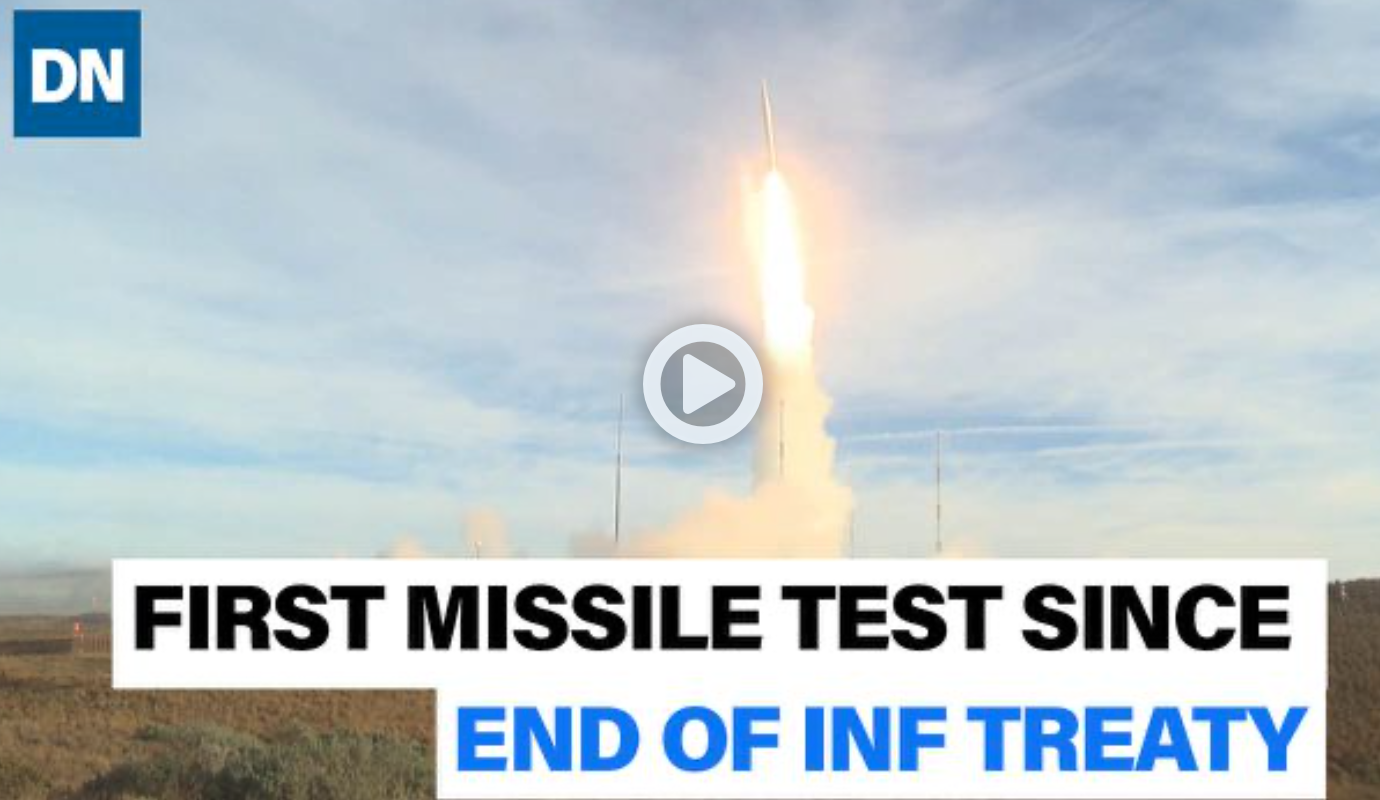
WASHINGTON — The U.S. has tested a ground-launched, intermediate-range ballistic missile with a range of more than 500 kilometers, the first such test since the country withdrew from the Intermediate-Range Nuclear Forces Treaty this year.
The test, which occurred Thursday at 8:30 a.m. PST, was configured to represent a conventional warhead. The test was anticipated for months, with Defense Department officials previously indicating they hoped to have it happen before the end of the year.
This Simulator Shows the Devastating Consequences of Global Nuclear War
Nuclear War Simulator, launching in 2020, lets the user design a plausible doomsday scenario and study the humanitarian impact. Just don’t call it a “game.”
ARTICLE BY: MATTHEW GAULT | vice.com
Full scale global nuclear war is hard to fathom. One nuclear launch could set off a chain of events that would radically alter life on the planet. Millions would die in the initial blasts and millions more would starve as the climate changed and our way of life withered. Just how are we supposed to reckon with the possibility of such wide-scale destruction?
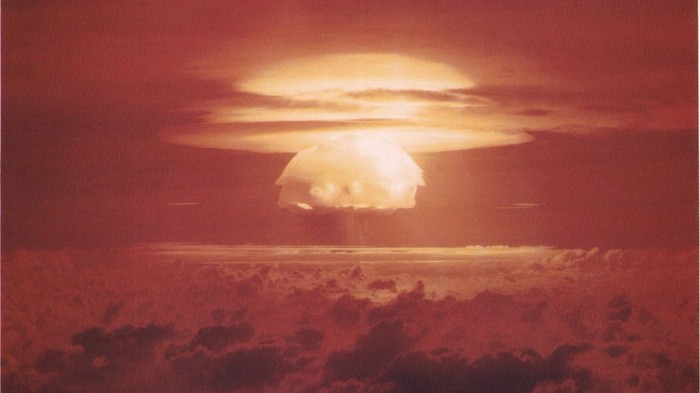
Programs like NUKEMAP let you plot individual bombs and video games like Defcon simulate the war, but neither comes close to rendering the devastation a doomsday scenario would bring. That’s what Nuclear War Simulator (NWS) is for.
Uranium contaminated property collapsing into Detroit River
Controversy continues to brew following revelations of repeated shoreline collapses into the Detroit River of a property contaminated with uranium, PCBs and other dangerous chemicals from an abandoned Manhattan Project contract facility in Detroit, Michigan.
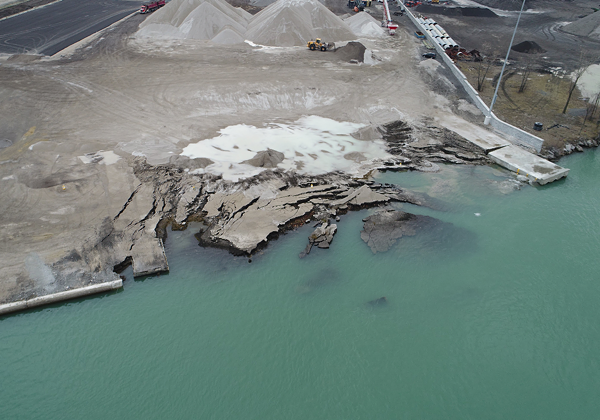
The most recent collapse into the river occurred on November 26 or 27, 2019 but was not reported until a week later with a tip off to the Windsor Star newspaper just across the river in Canada. A previous collapse into the river occurred in October 2011 did not apparently result in remediations. The old Revere Copper and Brass site, now known as Detroit Bulk Storage, was used in the 1940s to process more than a thousand tons of uranium that was rolled into fuel rods to make the fissionable material for the first atomic bombs at the end of World War II. The facility continued to operate as part of the nation’s atomic bomb assembly line well into the 1950s before winding down and eventually abandoned in 1984. It is considered just one of hundreds of nuclear weapons contractor sites that make up America’s forgotten nuclear “waste land.”
Here’s how Trump can get a win with Russia — and actually help all Americans
Extension of the New START Treaty would offer Trump an easy diplomatic win.
ARTICLE & ANALYSIS BY: MICHAEL MCFAUL | washingtonpost.com
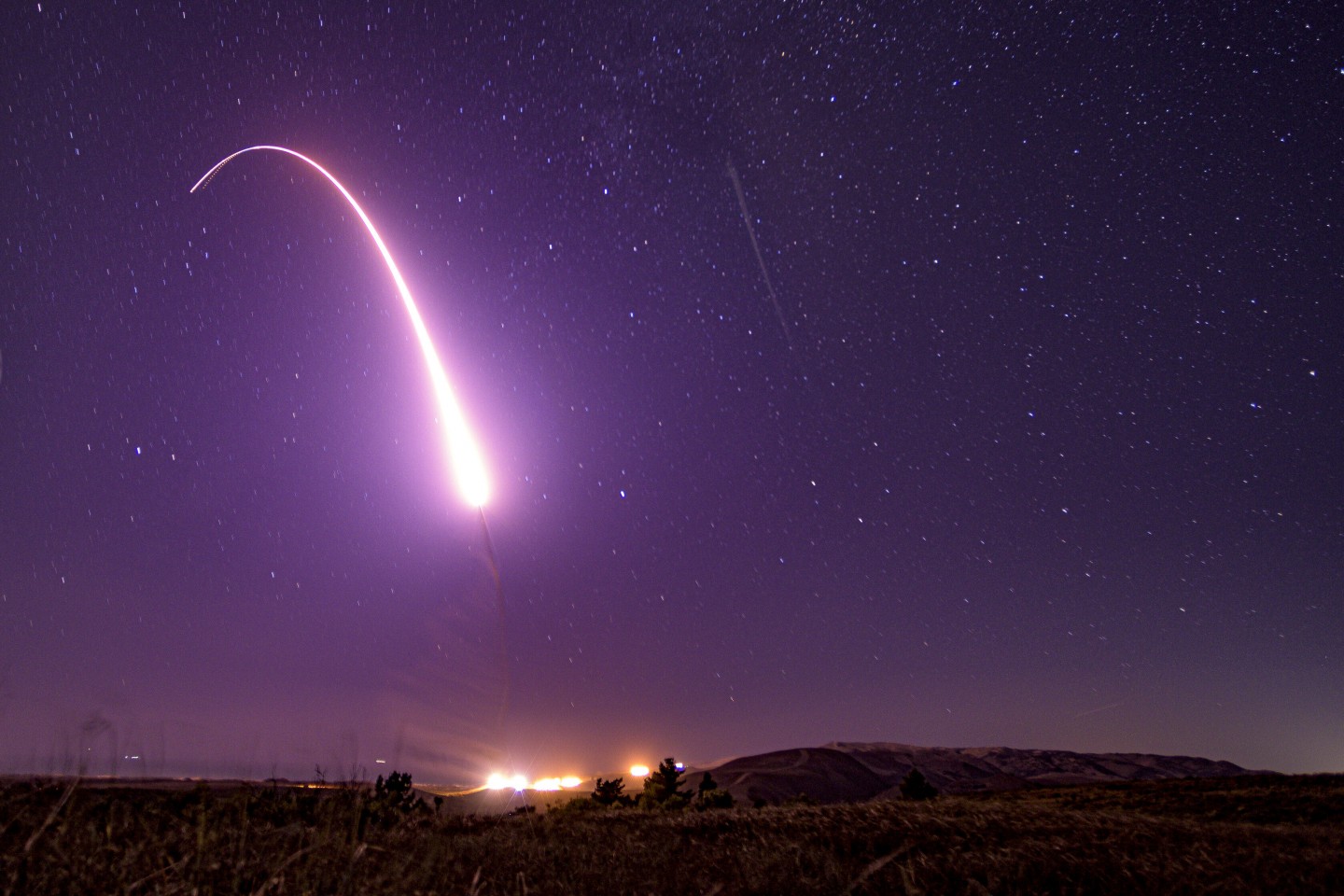
President Trump received Russian Foreign Minister Sergei Lavrov in the White House this week — a meeting that prompted considerable controversy, given the fraught backdrop of U.S.-Russia relations. Yet the coverage — additionally complicated by the impeachment proceedings taking place on Capitol Hill — almost entirely overlooked a crucial topic of the negotiations: the urgent need to keep alive a vital nuclear arms agreement.
Readouts and media reports reveal that Lavrov discussed the extension of the New Strategic Arms Reduction Treaty (START), set to expire in February 2021, with his American interlocutors. That’s the good news. The bad news is that Trump and Secretary of State Mike Pompeo both suggested that China must be included in a future strategic nuclear arms deal, hinting that they may not extend the New START Treaty without Chinese involvement.
That would be a major mistake. The United States and Russia should extend the New START Treaty, an outcome that clearly would serve U.S. national security interests. At the same time, U.S. arms control negotiators could begin discussions with their Chinese counterparts about a new, future multilateral treaty to limit the deployments of nuclear weapons. While doing so, they should recognize that China is already well below the limits on nuclear warheads and delivery vehicles specified by New START and thus need not be a party to this agreement.
But these two negotiations should be sequenced, not linked. Extend the New START Treaty with Russia first; begin strategy stability talks with Russia and China second.
Pentagon: Nuke official sexually harassed 3 women on his staff, resigns during probe
ARTICLE BY: TOM VANDEN BROOK | usatoday.com
WASHINGTON – A top Pentagon official for nuclear defense sexually harassed three women on his staff and resigned as an investigation substantiated the charges against him, the Defense Department inspector general reported Thursday.
Guy Roberts, who had served as the assistant Defense secretary for Nuclear, Chemical and Biological Defense Programs, resigned on April 2 amid a probe into allegations from three women on his staff that he had forced hugs and kisses on them and told inappropriate jokes. The inspector general’s investigation began Feb. 22.
2018
Lawsuit Compels Nationwide Public Review of Plutonium Bomb Core Production
AIKEN, S.C. — Today the National Nuclear Security Administration (NNSA), the semi-autonomous nuclear weapons agency within the Department of Energy, published a formal Notice of Intent in the Federal Register to complete a nationwide “programmatic environmental impact statement” on the expanded production of plutonium “pit” bomb cores. Pits are the essential radioactive triggers of modern nuclear weapons. The NNSA is aggressively seeking their expanded production for new-design nuclear weapons for the new nuclear arms race.
The South Carolina Environmental Law Project (SCELP) successfully represented the Gullah/Geechee Sea Island Coalition and Nuclear Watch New Mexico, Savannah River Site Watch and Tri-Valley Communities Against a Radioactive Environment in a legal challenge to NNSA’s attempt to improperly jump start dual site pit production. On September 30, 2024, United States District Court Judge Mary Geiger Lewis ruled that the NNSA had violated the National Environmental Policy Act (NEPA) by failing to properly consider alternatives before proceeding with its plan to produce at least 30 pits per year at the Los Alamos National Laboratory (LANL) in New Mexico and at least 50 pits per year at the Savannah River Site (SRS) in South Carolina.
Full Video Recording: NukeWatch and Dr. Michael Ketterer Present Results from Recent Sampling for Plutonium Contamination Around the Los Alamos National Lab
The Trinity and nuclear bombs have nothing to do with each other
“Oppenheimer called it the Trinity Test [based] on John Donne’s poem, with the Christian reference – but that’s got to be, in my mind, the ultimate oxymoron. The Trinity and nuclear bombs have nothing to do with each other – the Trinity represents life and community, love and tolerance and respect for one another, and atomic weapons are the exact opposite of that.
So we’ve got to do all we can to rid ourselves of this destructive power, and that’s why people of faith are involved in this important matter.”
– Archbishop of Santa Fe, John C. Wester
Vladimir Putin on nuclear war: U.S. is pushing world ‘closer to a very dangerous line
The U.S. is threatening to suspend a Cold War treaty limiting medium-range missiles because it says one of Russia’s weapons violates the agreement.
By Yuliya Talmazan and Alexander Smith
Russian President Vladimir Putin warned Thursday that the world is underestimating the threat of nuclear war and blamed the U.S. for risking a collapse in global arms controls.
nbcnews.com | Dec. 20, 2018 / 1:16 AM PST / Updated Dec. 20, 2018 / 7:04 AM PST
The U.S. is threatening to suspend a Cold War treaty limiting medium-range missiles because it says one of Russia’s weapons violates the agreement.
During his annual marathon news conference Thursday, Putin insisted that Washington was to blame. Most experts agree Russia has been violating the Intermediate-Range Nuclear Forces Treaty, signed in 1987 by President Ronald Reagan and Soviet leader Mikhail Gorbachev.
However, many of those same analysts have criticized President Donald Trump for walking away from the INF Treaty. They argue that quitting it won’t bring Russia into line, and instead could trigger an arms race with ground-based nuclear missiles returning to Europe for the first time in decades.Continue reading
“Is a nuclear World War III preventable? Yes, but only if preventing it becomes a central, common objective of our moment. And time is already running out.”
truthout.org When it comes to relations between Donald Trump’s America, Vladimir Putin’s Russia, and Xi Jinping’s China, observers everywhere are starting to talk about a return to an all-too-familiar past. “Now we have a new Cold War,” commented Russia expert Peter Felgenhauer in Moscow after President Trump announced plans to withdraw from the Intermediate-Range Nuclear Forces (INF) Treaty.
Continue reading
– DEPT. OF ENERGY HAD COMMITTED TO CLEANING UP ALL CONTAMINATION, NOW SAYS IT WILL LEAVE 98% OF CONTAMINATED SOIL NOT CLEANED UP – JUST WEEKS AFTER WOOLSEY FIRE BURNS SITE
– NEW REPORT DEVASTATES TOXIC AGENCY ASSURANCES THAT FIRE CAUSED NO TOXIC RELEASES
The Trump Administration’s Department of Energy (DOE) has announced it intends to leave almost all of the contaminated soil in its area of the Santa Susana Field Laboratory (SSFL) not cleaned up, despite admitting that would violate the legally binding agreement it entered into with California in 2010. The breach of long-standing promises is included in the final Environmental Impact Statement (EIS) for the SSFL cleanup, released by the Department of Energy on December 18, 2018.
Don’t Tear Up This Treaty
Arms control isn’t perfect. But abandoning treaties without a plan for the future is dangerous.
The Editorial Board
The editorial board represents the opinions of the board, its editor and the publisher. It is separate from the newsroom and the Op-Ed section.
nytimes.com | Dec. 15, 2018
Every American president from John F. Kennedy to Barack Obama has successfully negotiated an agreement with the Soviet Union, or the Russian federation, to reduce the threat from both countries’ vast nuclear arsenals. More than a dozen treaties limiting nuclear testing, nuclear weapons, activities in outer space and missile defense have been part of this mix.
The need for such restraint is irrefutable: No weapons are more lethal and potentially more destabilizing to the world than those that have earned the moniker “city killers.”Continue reading
Letter from 26 Senators Responding to Trump’s Nuclear Policy

FOR IMMEDIATE RELEASE: Thursday, December 13, 2018
FOLLOWING PRESIDENT TRUMP’S ALARMING DECISION TO DEVELOP NEW NUCLEAR WEAPONS WHILE ALSO MOVING TO UNILATERALLY ABANDON THE BIPARTISAN NUCLEAR TREATIES THAT HAVE HELPED KEEP THE WORLD SAFE FROM NUCLEAR WAR FOR DECADES, SENATORS GILLIBRAND, MERKLEY, WARREN, MARKEY, FEINSTEIN, KLOBUCHAR LEAD GROUP OF 26 SENATORS IN CALLING ON PRESIDENT TRUMP TO WORK TO PRESERVE THESE VITALLY IMPORTANT TREATIES, AVOID DRAGGING OUR COUNTRY INTO A DANGEROUS NEW NUCLEAR ARMS RACE WITH RUSSIA
Senators: “Your Administration’s Efforts to Double Down on New, Unnecessary Nuclear Weapons While Scrapping Mutually Beneficial Treaties Risks the United States Sliding Into Another Arms Race with Russia and Erodes U.S. Nonproliferation Efforts Around the World”
Trump Administration “Lowering the bar for level of protection of future generations and the environment…”
apnews.com U.S. Sen. Ron Wyden, an Oregon Democrat, writes to the DOE, “No one disputes the difficulty of retrieving and treating high-level waste from Hanford’s aging storage tanks. However, lowering the bar for level of protection of future generations and the environment by changing the definition of what has always been considered high-level waste requiring permanent disposal is a significant change.”
SPOKANE, Wash. (AP) — The Trump administration wants to reclassify some radioactive waste left from the production of nuclear weapons to lower its threat level and make disposal cheaper and easier.
The proposal by the U.S. Department of Energy would lower the status of some high-level radioactive waste in several places around the nation, including the Hanford Nuclear Reservation in Washington state — the most contaminated nuclear site in the country.
Russia Just Sent Two Nuclear-Capable Bombers to Venezuela
By VLADIMIR ISACHENKOV / AP time.com
(MOSCOW) — Two Russian nuclear-capable strategic bombers arrived in Venezuela on Monday, a deployment that comes amid soaring Russia-U.S. tensions.
Russia’s Defense Ministry said a pair Tu-160 bombers landed at Maiquetia airport outside Caracas on Monday following a 10,000-kilometer (6,200-mile) flight. It didn’t say if the bombers were carrying any weapons and didn’t say how long they will stay in Venezuela.
DOE – “As work at the facility will continue into 2019, no immediate workforce impacts are anticipated,”
Department of Energy to shut down Idaho nuclear waste treatment project, deemed not to be cost-effective
- The Idaho treatment plant compacts the transuranic waste, making it easier to ship and put into long-term storage at the Waste Isolation Pilot Plant in New Mexico.
ANA Press Release
Alliance for Nuclear Accountability
immediate release: Tuesday, November 27, 2018
Watchdog groups call for Congress to protect nuclear weapons communities—stop DOE limitations on Safety Board
Watchdog groups from across the country are insisting the Department of Energy withdraw DOE Order 140.1, a controversial order that would compromise safety at dozens of facilities in the US nuclear weapons complex, and are asking key Congressional committees to annul the revised order and preserve the critically important prerogatives of the Defense Nuclear Facilities Safety Board (DNFSB).
 DOE MUST RESTORE DEFENSE NUCLEAR FACILITIES SAFETY BOARD ACCESS TO INFORMATION, NUCLEAR SECURITY FACILITIES, AND PERSONNEL
DOE MUST RESTORE DEFENSE NUCLEAR FACILITIES SAFETY BOARD ACCESS TO INFORMATION, NUCLEAR SECURITY FACILITIES, AND PERSONNEL
What’s HappenedOn May 14, 2018, the Department of Energy (DOE) Deputy Secretary approved DOE Order 140.1 Interface with the Defense Nuclear Facilities Safety Board, which limits release of information, limits the DNFSB’s access to nuclear security sites, and personnel. The impacts are already being felt by Congress, the Board, DOE contractors and workers, and in communities located near some of the most dangerous nuclear facilities across the nation. |
ANA’s MessageThe Alliance for Nuclear Accountability has reviewed DOE Order 140.1 and believes it imposes a level of constraint on DNFSB that jeopardizes the important mission of the Safety Board. In fact, it may well violate the legislation that established the Board. ANA groups and the public at major DOE sites have come to rely on the Safety Board’s expertise to identify and hold accountable the DOE and National Nuclear Security Administration for worker and public safety related issues. |
2017
Lawsuit Compels Nationwide Public Review of Plutonium Bomb Core Production
AIKEN, S.C. — Today the National Nuclear Security Administration (NNSA), the semi-autonomous nuclear weapons agency within the Department of Energy, published a formal Notice of Intent in the Federal Register to complete a nationwide “programmatic environmental impact statement” on the expanded production of plutonium “pit” bomb cores. Pits are the essential radioactive triggers of modern nuclear weapons. The NNSA is aggressively seeking their expanded production for new-design nuclear weapons for the new nuclear arms race.
The South Carolina Environmental Law Project (SCELP) successfully represented the Gullah/Geechee Sea Island Coalition and Nuclear Watch New Mexico, Savannah River Site Watch and Tri-Valley Communities Against a Radioactive Environment in a legal challenge to NNSA’s attempt to improperly jump start dual site pit production. On September 30, 2024, United States District Court Judge Mary Geiger Lewis ruled that the NNSA had violated the National Environmental Policy Act (NEPA) by failing to properly consider alternatives before proceeding with its plan to produce at least 30 pits per year at the Los Alamos National Laboratory (LANL) in New Mexico and at least 50 pits per year at the Savannah River Site (SRS) in South Carolina.
Full Video Recording: NukeWatch and Dr. Michael Ketterer Present Results from Recent Sampling for Plutonium Contamination Around the Los Alamos National Lab
The Trinity and nuclear bombs have nothing to do with each other
“Oppenheimer called it the Trinity Test [based] on John Donne’s poem, with the Christian reference – but that’s got to be, in my mind, the ultimate oxymoron. The Trinity and nuclear bombs have nothing to do with each other – the Trinity represents life and community, love and tolerance and respect for one another, and atomic weapons are the exact opposite of that.
So we’ve got to do all we can to rid ourselves of this destructive power, and that’s why people of faith are involved in this important matter.”
– Archbishop of Santa Fe, John C. Wester
New Mexico Environment Department Surrendered to DOE Extortion
The New Mexico State Auditor Office recently questioned whether two settlements between the New Mexico Environment Department and the Department of Energy were in the best interests of New Mexico. That Office noted:
The [New Mexico Environment] Department unnecessarily forgave tens of millions of dollars in civil penalties related to various waste management issues and missed cleanup deadlines by the Department of Energy (DOE) and its contractors… [C]onsidering the seriousness of the violations, and the clarity regarding responsibility for the violations, it appears highly unusual that the Department would not collect any civil penalties under these circumstances. [1]
The settlements were over contractor violations at the Waste Isolation Pilot Plant (WIPP) and Los Alamos National Laboratory (LANL) that resulted in a ruptured waste drum that contaminated 22 workers and closed WIPP for nearly three years, costing the American taxpayer at least $1.5 billion to reopen. NMED claimed it had to agree to “supplemental environmental projects” instead of financial penalties because otherwise DOE would have taken the penalty money out of cleanup funding. [2]
Unfortunately, the $74 million NMED agreed to in supplemental environmental projects were for items that the DOE is already obliged to do. For example, $46 million was dedicated to repaving roads at or near WIPP and LANL that DOE uses to ship radioactive wastes, and another $10 million was earmarked for LANL’s own potable water supply.[3]
In contrast, NMED completed an assessment of $54 million in penalties that would have gone to New Mexico, but did not enforce them before making the settlements with DOE. This was at a time when the state was beginning to face a serious budget crisis. As State Senator John Arthur Smith (Chair of the Senate Finance Committee) put it, NMED’s failure to levy penalties when New Mexico was facing a budget crisis is “taking it out of the pockets of our kids and young people when they do something like that.” [4]
Jay Coghlan, Director of Nuclear Watch New Mexico, commented, “This is inexcusable that NMED preemptively surrendered to Department of Energy extortion. In effect DOE is saying if you, the regulator, fine us, we will cut the money the taxpayer has paid to clean up our mess that threatens the citizens you are suppose to protect.”
NMED’s position that it had to agree to DOE’s extortion is not borne out by the facts. For example, there is a clause in the current LANL management contract that specifically holds the contractor accountable for “Fines and penalties imposed by any other regulatory agency, if it is the result of Contractor or subcontractor misconduct.” [5] Moreover, DOE cleanup projects are funded by specific congressional budget line items. It is highly unlikely that DOE could legally reprogram money from them to pay penalties without congressional approval.
In addition to the WIPP settlements, the State Auditor Office also noted:
The 2016 settlement agreement between DOE and the Department regarding longstanding contamination at LANL also raises concerns. While DOE and its contractor incurred millions of dollars in potential civil penalties related to missed cleanup deadlines, in revising the 2005 Compliance Consent Order, the Department also completely forgave the collection of these penalties while also loosening the compliance deadline framework.
Before Gov. Susanna Martinez took office New Mexico had an enforceable Consent Order with a detailed cleanup compliance schedule that implicitly forced DOE to get additional LANL cleanup funding or face financial penalties for missed deadlines. But under Gov. Martinez and at the Lab’s request, former NMED Secretary Ryan Flynn and Kathryn Roberts (then-Director of NMED’s Resource Protection Division) granted more than 150 time extensions for cleanup milestones, and then turned around and claimed that the Order was not working. In June 2016 NMED signed a revised Consent Order full of loopholes that allows the Lab to potentially get out of cleanup by claiming that it is too difficult or costly.
With the revised Consent Order in hand, the DOE Los Alamos Environmental Management Office then followed with a baseline cost projection of up to $3.8 billion to clean up LANL, which is woefully low, while nevertheless delaying cleanup completion out to 2040. DOE also claimed that only 5,000 cubic meters of wastes need to be cleaned up, willfully ignoring the estimated ~200,000 cubic meters they plan to “cap and cover” and leave buried as a permanent nuclear waste dump. In alignment with this, the DOE just awarded a 10-year LANL cleanup contract to Newport News Nuclear BWXT, LLC, at a rate of $140 million per year, again woefully low.
Flynn subsequently left NMED through the proverbial revolving door to become executive director of the New Mexico Oil and Gas Association, whose main mission is to lobby against environmental regulations. Roberts left NMED to work for Longenecker and Associates, a DOE contractor that is named as an “interested party” in bidding for the prime LANL management contract. At Longenecker, Roberts joined Christine Gelles, who, as the former head of DOE environmental management programs at LANL, initiated negotiations with NMED and Roberts over the revised Consent Order.
Nuclear Watch has sued DOE over missed compliance deadlines in the 2005 Consent Order, in which New Mexico could potentially collect ~$100 million in penalties. Despite that, the Environment Department intervened against the enviromentalists in that lawsuit.
Jay Coghlan of Nuclear Watch added, “We look forward to a New Mexico Environment Department under the next governor that quits coddling the nuclear weapons industry and aggressively protects the environment through enforceable cleanup deadlines and penalties. That would be a real win-win for northern New Mexicans, permanently protecting our precious water resources while creating hundreds of high-paying jobs.”
# # #
Additional Background:
Nuclear Watch New Mexico’s September 21, 2016 Second Amended Complaint in its lawsuit over missed cleanup milestones in the 2005 Consent Order is available at https://nukewatch.org/importantdocs/cleanup_lawsuit/Second-Amended-Complaint-as-filed-9-21-16.pdf
For a detailed critique of the revised Consent Order by Nuclear Watch please see https://nukewatch.org/watchblog/?p=2492
[1] The New Mexico State Auditor’s November 21, 2017 letter to Mr. Butch Tongate, the current NMED Secretary, is available at https://nukewatch.org/importantdocs/resources/NMED_ACO_SA_lttr_11-21-17.pdf
[2] NMED’s claim that it had to agree to supplemental environmental projects and not penalties is from State auditors challenge WIPP leak settlement, Rebecca Moss, Nov 30, 2017, http://www.santafenewmexican.com/news/local_news/state-auditors-challenge-wipp-leak-settlement/article_8e0a3329-e38d-5680-a228-a6be7f2ea451.html
[4] Sen. John Arthur Smith’s quote is also from Rebecca Moss’ article State auditors challenge WIPP leak settlement
[5] See LANS Prime Contract Sections B – H, p. 20, http://www.lanl.gov/about/_assets/docs/conformed-prime-contract.pdf
New Mexico Environment Department Surrendered to DOE Extortion
Santa Fe, NM.
The New Mexico State Auditor Office recently questioned whether two settlements between the New Mexico Environment Department and the Department of Energy were in the best interests of New Mexico. That Office noted:
“The New Mexico Environment Department unnecessarily forgave tens of millions of dollars in civil penalties related to various waste management issues and missed cleanup deadlines by the Department of Energy (DOE) and its contractors. Considering the seriousness of the violations, and the clarity regarding responsibility for the violations, it appears highly unusual that the Department would not collect any civil penalties under these circumstances.”
NMED completed an assessment of $54 million in penalties that would have gone to New Mexico, but did not enforce them before making the settlements with DOE. This was at a time when the state was beginning to face a serious budget crisis. As State Senator John Arthur Smith (Chair of the Senate Finance Committee) put it, NMED’s failure to levy penalties when New Mexico was facing a budget crisis is “taking it out of the pockets of our kids and young people when they do something like that.”
Jay Coghlan, Director of Nuclear Watch New Mexico, commented, “This is inexcusable that NMED preemptively surrendered to Department of Energy extortion. In effect DOE is saying if you, the regulator, fine us, we will cut the money the taxpayer has paid to clean up our mess that threatens the citizens you are suppose to protect.”
Los Alamos Hires New Contractor – Starts Cleanup On the Cheap
Santa Fe, NM
Today the Department of Energy (DOE) announced the award of the new Los Alamos National Laboratory legacy cleanup contract to Newport News Nuclear BWXT-Los Alamos, LLC. The $1.39 billion contract is for ten years, which includes a three-year option and a two-year option. That works out to $139 million per year. LANL’s budget request has been around $189 million per year, but not EMLA’s entire budget goes to the cleanup contractor.
ICAN Honored: 2017 Nobel Peace Prize Ceremony
- 6.36 – Address of Nobel Committee leader Berit Reiss-Andersen on the choice of ICAN for the 2017 Peace Prize (view transcript)
- 35.12 – Presentation of the award to ICAN’s Beatrice Fihn and Setsuko Thurlow
- 44.22 – ICAN Director Beatrice Fihn address (view transcript)
- 1.03.55 – Setsuko Thurlow address (view transcript)
Daniel Ellsberg: The Doomsday Machine: Confessions of a Nuclear War Planner
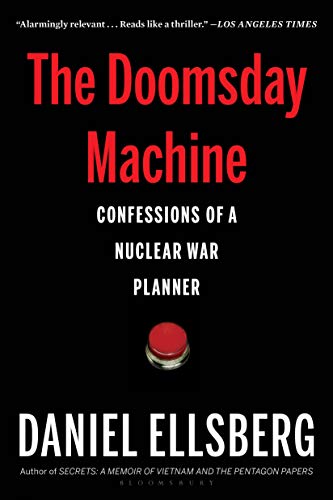 Ron Rosenbaum, in his fascinating and highly readable “How The End Begins” (2011) notes that when Kissinger told Nixon that Ellsberg was “the most dangerous man in America” he wasn’t referring to the Pentagon Papers but to what Ellsberg knew about top secret nuclear war plans from his work at RAND. Ellsberg had also made off with thousands of nuclear war-fighting strategy documents in addition to the Pentagon Papers, but decided to release the latter first. As it turned out much of the nuclear papers were lost during the turmoil following the Pentagon Papers release. This book, long overdue, is about what he learned then.
Ron Rosenbaum, in his fascinating and highly readable “How The End Begins” (2011) notes that when Kissinger told Nixon that Ellsberg was “the most dangerous man in America” he wasn’t referring to the Pentagon Papers but to what Ellsberg knew about top secret nuclear war plans from his work at RAND. Ellsberg had also made off with thousands of nuclear war-fighting strategy documents in addition to the Pentagon Papers, but decided to release the latter first. As it turned out much of the nuclear papers were lost during the turmoil following the Pentagon Papers release. This book, long overdue, is about what he learned then.
Ellsberg recalls being tasked to review the strategic war-fighting plans in effect under Eisenhower, and discovering that they called for “hitting every city, actually every town, above 25,000 population” in Russia and China and to some extent East Europe. Pressed for an estimate of death toll, the pentagon came back with 600 million dead. And that was not counting US and West European death tolls. “I thought, ‘This is the most evil plan that has ever existed. It’s insane.'”
Referring to US and Russian ICBM forces still to this day on alert: “Here is what we now know: the United States and Russia each have an actual Doomsday Machine.”
Democracy Now interview with transcript
Harper’s Magazine excerpt, Dec 6, 2017
The Particular Problem of ICBMs
The presidential authority to launch a nuclear strike alone stems from the Cold War, when the US feared a Soviet missile strike against US ICBM silos; our missiles had to be launched before theirs hit, and Soviet missiles would reach targets in the US in 20-30 minutes, so there would be no time to consult a larger circle.
This is one of the reasons Former Secretary of Defense William Perry and General James Cartwright, former Commander of the US Strategic Command, cited in a letter to President Trump on October 31, urging him to abandon the ICBM leg of the triad, rather than forging ahead with an expensive full replacement ICBM arsenal. Because of the ‘use them or lose them’ logic, plus the fact that ICBMs cannot be recalled once launched, their letter identifies this leg of the triad as the most susceptible to an unintended or accidental nuclear war.
The Air Force hasn’t waited for the Nuclear Posture Review to be released this winter, already awarding contracts to Northrup Grumman and Boeing for the ‘modernized’ ICBM force, called Ground-Based Strategic Deterrent, or GBSD. (Lockheed is also in the competition – the Air Force will ‘down-select’ from three companies to two for the next phase of the program.) (ref)
James Doyle, The Bulletin, October 25:
“Ballistic missiles armed with nuclear warheads are enablers of the apocalypse.”
Some notes on the Congressional Budget Office study on nuclear weapons modernization costs
CBO quotes in italics.
First, some policy matters not addressed in the CBO study.
Driving the astronomical expense of modernization that the CBO reports on is the fact that instead of maintaining just the few hundred warheads needed for the publicly claimed policy of “deterrence,” thousands of warheads are being refurbished and improved to fight a potential nuclear war. This is the little known but explicit policy of the U.S. government. As a top-level 2013 Defense Department policy document put it, “The new guidance [in Obama’s 2010 Nuclear Posture Review] requires the United States to maintain significant counterforce capabilities against potential adversaries. The new guidance does not rely on a “counter-value’ or “minimum deterrence” strategy.” [1]
A new Nuclear Posture Review under President Trump is currently scheduled for release in Spring 2018. Among other things, it is expected to overturn the 2010 Nuclear Posture Review’s prohibition against new-design nuclear weapons, possibly promoting more usable “mini-nukes”, and to shorten the lead-time necessary to resume full-scale nuclear weapons testing. Any changes implemented by Trump’s Nuclear Posture Review may well add to the CBO’s new cost estimate.
Nuclear weapons “modernization” is a Trojan horse for the indefinite preservation and improvement of the US nuclear weapons arsenal, contrary to the 1970 Nuclear NonProliferation Treaty and the nuclear weapons ban treaty passed this last June by 122 nations at the United Nations (for which the International Campaign to Abolish Nuclear Weapons was awarded the Nobel Peace Prize). Contrary to those treaties, all eight existing nuclear weapons powers are now modernizing their nuclear stockpiles, while the newest ninth power North Korea is engaged in heated, bellicose rhetoric with President Trump. But clearly the astronomical expense of US nuclear weapons modernization is not needed to deal with North Korea.
Ironically, “modernization” may actually undermine national security because the nuclear weapons labs (Los Alamos, Livermore and Sandia) are pushing radically new weapons designs that can’t be full-scale tested, or, alternatively, if they were to be tested would have severe international proliferation consequences. See House Armed Services Committee Chairman Max Thornberry’s recent remarks that perhaps the US needs to return to testing at
The most prudent way to maintain stockpile safety and reliability would be to hew to the extensively tested pedigree of the existing stockpile while performing rigorous surveillance and well proven methods of maintenance, including the routine exchange of limited life components. As a 1993 Stockpile Life Study by the Sandia Labs concluded:
It is clear that, although nuclear weapons age, they do not wear out; they last as long as the nuclear weapons community (DOE and DOD) desires. In fact, we can find no example of a nuclear weapons retirement where age was ever a major factor in the retirement decision. (https://nukewatch.org/facts/nwd/Sandia_93_StockpileLife.pdf, parentheses in the original.)
While the 1993 Sandia Stockpile Life Study is obviously dated, it is still relevant because no new-design nuclear weapons have been manufactured since then (which may soon change). Further, the findings of that study have since been bolstered by subsequent expert independent studies (see, for example, https://nukewatch.org/facts/nwd/JASON_ReportPuAging.pdf and https://fas.org/irp/agency/dod/jason/lep.pdf).
CBO Costs
P.1 The Congressional Budget Office estimates that the most recent detailed plans for nuclear forces, which were incorporated in the Obama Administration’s 2017 budget request, would cost $1.2 trillion in 2017 dollars over the 2017–2046 period: more than $800 billion to operate and sustain (that is, incrementally upgrade) nuclear forces and about $400 billion to modernize them.
That planned nuclear modernization would boost the total costs of nuclear forces over 30 years by roughly 50 percent over what they would be to only operate and sustain fielded forces, CBO estimates. During the peak years of modernization, annual costs of nuclear forces would be roughly double the current amount. That increase would occur at a time when total defense spending may be constrained by long-term fiscal pressures, and nuclear forces would have to compete with other defense priorities for funding.
P. 2: Overall, CBO estimates that planned modernization would cost $399 billion through 2046…
P.3 : The rising costs of modernization would drive the total annual costs of nuclear forces, including operation and sustainment, from $29 billion in 2017 to about $50 billion through the early 2030s, CBO estimates. As most modernization programs reach completion, costs would gradually fall to around $30 billion a year in the 2040s.
First, these costs are not necessary, as implied in the policy section above, when well-known methods would prudently and faithfully maintain the stockpile. Moreover, these expenditures that the taxpayer is being compelled to bear could actually degrade national security. To further put the cost of “modernization” into perspective, the Congressional Research Service has estimated the total post-9.11 costs of the “Global War on Terrorism” at $1 trillion and all of World War II at $4 trillion. See https://fas.org/sgp/crs/natsec/RS22926.pdf
It is also roughly the same amount that the Trump Administration is beginning to push for in questionable missile defense technologies and tax cuts for the already rich, adding to uncertainties how the average American taxpayer can afford nuclear weapons “modernization”.
P. 20: Nuclear Weapons Laboratories and the Production Complex.
DOE operates a complex of design laboratories and production facilities that provide the engineering and scientific capabilities required to sustain the stockpile of nuclear weapons. Those capabilities include the following:
- Facilities to produce and process the nuclear materials and other specialized components used in nuclear weapons and weapons research;
- Basic scientific research and high-speed computer simulations to improve understanding of the dynamics of nuclear explosions and the aging of weapons;
- Research to develop and certify the processes used in maintaining nuclear weapons; and
- The infrastructure required to support those efforts.
In CBO’s estimation, the costs to DOE of those efforts would be $261 billion over the 2017–2046 period, or an average of about $9 billion per year, under the 2017 plan. Those costs do not include sustainment and LEP activities specific to particular weapon types; in CBO’s accounting, those costs have been included with the costs of their associated delivery systems. Projected costs also exclude DOE’s other nuclear-related activities, like nonproliferation efforts and environmental cleanup.
Unfortunately the CBO report gives little further detail on DOE costs. But do note that nonproliferation and cleanup programs will likely remain flat or be cut in order to help pay for “modernization”, and the pressure to do so will likely increase every year the deeper we get into modernization.
With respect to its reported DOE costs, CBO is essentially tracking the National Nuclear Security Administration’s (NNSA’s) annual budget category “Total Weapons Activities” minus the Life Extension Programs (LEPs). Total Weapons Activities had a FY 2018 Congressional Budget Request (CBR) of $10.2 billion. Of that, LEPs) were $1.74 billion, a $441.56 increase above FY 2017 (see FY 2018 NNSA budget request, p. 64.), and which will likely increase yet more.
To project future labs’ and production complex budgets, we can take the CBO’s $9 billion annually and add annual Life Extension Programs costs of around $2 billion for a total cost of $11 billion. Thus the labs and production plants are obviously going to see budget increases for some period of time.
This won’t however necessarily translate into a lot of new jobs at the New Mexico labs, which is often promoted by the New Mexico congressional delegation. For more on this please see https://nukewatch.org/facts/nwd/Expanded-Pit-Production-lack-of-positive-impact-9-15-17.pdf
Of particular note is that the NNSA’s own environmental impact statement (EIS) for the Chemistry and Metallurgy Research Replacement Project-Nuclear Facility said that despite its $6.5 billion cost it would not produce a single new Lab job because it would merely relocate existing jobs. Nuclear Watch argues that comprehensive cleanup would be the real job producer at LANL.
P. 12: At DOE, persistent managerial problems, particularly with security and with the execution of construction projects, have led to a debate about management structure for the weapons laboratories. Resolving those issues is likely to add to the costs of nuclear weapons.
Transformation of the Existing Stockpile
DoD and DOE are seeking to transform the existing nuclear weapons stockpile through its speculative “3+2” plan. “2” is for the air leg, with B61-12s and Long-Range Stand-Off (LRSO) warheads on new bombers. “3” is for the Interoperable Warheads for land and sub-launched ballistic missiles.
P. 2: Overall, CBO estimates that planned modernization would cost $399 billion through 2046 and include these programs:….
P. 3: A new air-launched nuclear cruise missile, the Long-Range Standoff (LRSO) weapon;
The LRSO is controversial and a number of Democrat senators are on record opposing it (especially Dianne Feinstein), in large part because it is viewed as a destabilizing nuclear weapon (the proverbial “bolt out of the blue”). Ex-DoD Secretary Bill Perry speaks very eloquently against it.
P.3: A life-extension program (LEP) for the B61 nuclear bomb that would combine several different varieties of that bomb into a single type, the B61-12; A LEP for the B61-12 bomb when it reaches the end of its service life, referred to as the Next B61.
My point here is that a perpetual cycle of exorbitant Life Extension Programs (LEPs) is being planned that goes beyond the CBO report’s end date of 2046. Moreover, the B61-12, melded from one strategic and 3 tactical variants, arguably has new military capabilities since its new tail kit gives it “smart” bomb capabilities.
P. 3: A series of LEPs that would produce three interoperable warheads (called IW-1 through IW-3), each of which would be compatible with both ICBMs and SLBMs. Comment below.
The lethality of the US nuclear weapons stockpile is already being tripled through a new “superfuze” for the sub-launched W76, the most prevalent warhead in the stockpile. See https://thebulletin.org/how-us-nuclear-force-modernization-undermining-strategic-stability-burst-height-compensating-super10578 This could have serious geopolitically destabilizing consequences. This superfuze or similar ones may be used in other Life Extension Programs (LEPs), creating yet more new military capabilities.
The Interoperable Warheads
P. 31: The three IWs (Interoperable Warheads), designated IW-1 through IW-3, are slated to enter development in 2022, 2026, and 2033, respectively. Collectively, the three IWs would replace a total of four types of warheads—two for ICBMs (the W78 and W87) and two for SLBMs (the W76 and W88).
- Three speculative IW’s to replace just four warheads? That’s a lot of expense. The FY 17 Stockpile Stewardship and Management Plan shows estimated costs of ~$14 billion each (or ~$42 billion total), which is likely low.
- We argue that the W78 should have a “simple” less expensive and less technically risky Life Extension Program instead of the IW (which reportedly elements within the Air Force are receptive to). The W87 has already gone through a Life Extension Program. It was initially downloaded from decommissioned MX Peacekeeper missiles, but about 200 W87 warheads have been reloaded onto Minuteman III missiles, leaving some 250 spares. The W76 is now half-way through a LEP, with arguably new military capabilities (see below). The W88 is about to go through a major “alteration.”
- So why are Interoperable Warheads needed? One likely reason is that the IWs are primarily being pushed by the Livermore Lab as a means for it to stay relevant in the nuclear weapons game. The Los Alamos National Laboratory (LANL), which has been dominated by Livermore leadership for the last decade, will produce new plutonium pits for the IWs.
- The US Navy is on record as not wanting the IW-1. See the 2012 Navy memo leaked to us at https://nukewatch.org/importantdocs/resources/Navy-Memo-W87W88.pdf More recently, Navy Strategic Missile Boss: Interoperable Warhead Not Yet Required http://seapowermagazine.org/stories/20170525-IW.html
- The Navy will be even less inclined to want the IW-1 because there is a major $3 billion “alteration” scheduled for the W88 warhead which will “refresh” its conventional explosives and give it a new arming, fuzing and firing set that may give it new military capabilities.
Expanded plutonium pit production at LANL
Expanded plutonium pit production is not necessary. See our extended argument at https://nukewatch.org/facts/nwd/PitProductionFactSheet.pdf
But simply put, the clearest evidence that none is needed is that no pit production is scheduled for existing nuclear weapons. The 29 stockpile plutonium pits for the W88 sub-launched warhead that LANL finished in 2011 was to catch up on the production run that was abruptly stopped at the Rocky Flats Plant by a 1989 FBI raid investigating environmental crimes. No production of any type of pit for the existing stockpile has been scheduled since then.
Future expanded plutonium pit production is for the Interoperable Warhead (IW). The link between the Interoperable Warhead and expanded plutonium pit production is demonstrated at:
An NNSA official also stated that the IW-1 LEP budget estimates in the 2016 budget materials are predicated on NNSA successfully modernizing its plutonium pit production capacity. The official stated that if there are delays in the current plutonium infrastructure strategy, the IW-1 LEP will bear costs that are greater than currently estimated to produce the number of additional plutonium pits it needs to support the program. Modernizing The Nuclear Security Enterprise, Government Accountability Office, March 2016, p. 29, http://www.gao.gov/assets/680/675622.pdf
The Interoperable Warhead will use a W87-like pit.
Don COOK (then-NNSA Dep. Administrator for Defense Programs): We’re going through a down selection right now involving NNSA, DOD, StratCom, Joint Staff, Navy and Air Force. And we are looking particularly at the W-87 pit because it’s a pit that’s already based on IHE (insensitive high explosives)… we’ve begun the engineering and development of that kind of a pit at PF-4, at Los Alamos, and work is progressing very well. http://secure.afa.org/HBS/transcripts/2013/May 7 – Dr. Cook.pdf
LANL Director McMillan: “Also during the past year, we successfully completed production of three W87 development pits.” Congressional testimony, https://www.armed-services.senate.gov/imo/media/doc/McMillan_04-09-14.pdf
NNSA FY 2018 Congressional Budget Request, p. 57: Increases are also included for Plutonium Sustainment to fabricate four to five development (DEV) W87 pits…
Ibid., p. 72: Plutonium Sustainment – Fabricate four to five development (DEV) W87 pits.
New pits for the Interoperable Warhead will not be exact replicas, and therefore could degrade national security because they cannot be full-scale tested, or perhaps worse push the US back into testing. This is indicated in # 4 below:
Plutonium Sustainment includes the following:
(1) Plutonium pit process engineering, process qualification, pit manufacturing, pit manufacturing equipment and personnel, pit fabrication tooling design and manufacturing, and non-nuclear pit component manufacturing.
(2) Design laboratory and production plant activities for plutonium stockpile product development.
(3) Engineering and physics-based evaluation and testing of development pits necessary for war reserve production.
(4) Fabrication of design definition development pits that explore new design features. NNSA FY 2018 Congressional Budget Request, P. 107
Two recent related Nuclear Watch press releases
- Cost of Nuclear Weapons Upgrades and Improvements Increases to $1.2 Trillion, https://nukewatch.org/pressreleases/PR-CBO-10-31-17.pdf
Quote: Jay Coghlan, NukeWatch Director, commented, “The American public is being sold a bill of goods in so-called nuclear weapons modernization, which will fleece the taxpayer, enrich the usual giant defense contractors, and ultimately degrade national security. Inevitably this won’t be the last major price increase, when the taxpayer’s money could be better invested in universal health care, natural disaster recovery, and cleanup of Cold War legacy wastes. Nuclear weapons programs should be cut while relying on proven methods to maintain our stockpile as we work toward a future world free of nuclear weapons. That is what would bring us real security.”
- Santa Fe City Council: LANL Cleanup Order Must Be Strengthened & Expanded
and Plutonium Pit Production Suspended Until Safety Issues Are Resolved, https://nukewatch.org/pressreleases/PR-SF-City-Resolution-10-27-17.pdf
Quote: Councilwoman Renee Villarreal, who led the effort, commented:
As emphasized through this resolution, prioritizing cleanup and safety will have a direct impact on the City of Santa Fe and northern NM communities by doing right for past and historic legacy contamination, as well as recent nuclear criticality safety incidents at LANL. Regional economic development would be stimulated through comprehensive cleanup of the Lab. That would be a real win-win for northern New Mexicans, permanently protecting the environment and our water resources while providing hundreds of high paying jobs.
[1] The quote on top-level counterforce nuclear weapons doctrine is from Report on Nuclear Implementation Strategy of the United States Specified in Section 491 of 10. U.S.C., Department of Defense, June 2013, page 4 (quotation marks in the original) http://www.globalsecurity.org/wmd/library/policy/dod/us-nuclear-employment-strategy.pdf
Cost of Nuclear Weapons Upgrades and Improvements Increases to $1.2 Trillion
Cost of Nuclear Weapons Upgrades and Improvements Increases to $1.2 Trillion
Today, in Washington, DC, the Congressional Budget Office released its new report Approaches for Managing the Costs of U.S. Nuclear Forces, 2017 to 2046, which it summarized as:
The Congressional Budget Office estimates that the most recent detailed plans for nuclear forces, which were incorporated in the Obama Administration’s 2017 budget request, would cost $1.2 trillion in 2017 dollars over the 2017–2046 period: more than $800 billion to operate and sustain (that is, incrementally upgrade) nuclear forces and about $400 billion to modernize them.
That planned nuclear modernization would boost the total costs of nuclear forces over 30 years by roughly 50 percent over what they would be to only operate and sustain fielded forces, CBO estimates. During the peak years of modernization, annual costs of nuclear forces would be roughly double the current amount. That increase would occur at a time when total defense spending may be constrained by long-term fiscal pressures, and nuclear forces would have to compete with other defense priorities for funding.
To put this in perspective, the Congressional Research Service has estimated the total post-9.11 costs of the “Global War on Terrorism” at $1 trillion and all of World War II at $4 trillion. It is also roughly the same amount that the Trump Administration is beginning to push for in questionable missile defense technologies and tax cuts for the already rich, adding to uncertainties how the average American taxpayer can afford it.
Expanded U.S. nuclear capabilities under the rubric of “modernization” include:
- The wholesale rebuilding of the Department of Energy’s production complex for nuclear weapons, with new and/or upgraded manufacturing plants for nonnuclear, plutonium and highly enriched uranium components expected to be operational until ~2080;
- A perpetual cycle of exorbitant Life Extension Programs that refurbish existing nuclear warheads while giving them new military capabilities (see, for example, https://thebulletin.org/how-us-nuclear-force-modernization-undermining-strategic-stability-burst-height-compensating-super10578); and
- Completely new intercontinental ballistic missiles, destabilizing cruise missiles, heavy bombers and submarines to deliver the rebuilt nuclear weapons.
Driving this astronomical expense is the fact that instead of maintaining just the few hundred warheads needed for the publicly claimed policy of “deterrence,” thousands of warheads are being refurbished and improved to fight a potential nuclear war. This is the little known but explicit policy of the U.S. government. As a top-level 2013 Defense Department policy document put it, “The new guidance [in Obama’s 2010 Nuclear Posture Review] requires the United States to maintain significant counterforce capabilities against potential adversaries. The new guidance does not rely on a “counter-value’ or “minimum deterrence” strategy.”
A new Nuclear Posture Review under President Trump is currently scheduled for release in Spring 2018. Among other things, it is expected to overturn the 2010 Nuclear Posture Review’s prohibition against new-design nuclear weapons, possibly promoting more usable “mini-nukes”, and to shorten the lead-time necessary to resume full-scale nuclear weapons testing.
Nuclear weapons “modernization” is a Trojan horse for the indefinite preservation and improvement of the US nuclear weapons arsenal, contrary to the 1970 Nuclear NonProliferation Treaty and the nuclear weapons ban treaty passed this last June by 122 nations at the United Nations (for which the International Campaign to Abolish Nuclear Weapons was awarded the Nobel Peace Prize). Contrary to those treaties, all eight existing nuclear weapons powers are modernizing their nuclear stockpiles, while the newest ninth power North Korea is engaged in heated, bellicose rhetoric with President Trump. But clearly the astronomical expense of US nuclear weapons modernization is not needed to deal with North Korea.
Ironically, “modernization” may actually undermine national security because the nuclear weapons labs (Los Alamos, Livermore and Sandia) are pushing radically new weapons designs that can’t be full-scale tested, or, alternatively, if they were to be tested would have severe international proliferation consequences. The most prudent way to maintain stockpile safety and reliability would be to hew to the extensively tested pedigree of the existing stockpile while performing rigorous surveillance and well proven methods of maintenance, including the routine exchange of limited life components. As a 1993 Stockpile Life Study by the Sandia Labs concluded:
It is clear that, although nuclear weapons age, they do not wear out; they last as long as the nuclear weapons community (DOE and DOD) desires. In fact, we can find no example of a nuclear weapons retirement where age was ever a major factor in the retirement decision. (Parenthesis in the original.)
While the 1993 Sandia Stockpile Life Study is obviously dated, it is still relevant because no new-design nuclear weapons have been manufactured since then (which may soon change). Further, the findings of that study have since been bolstered by subsequent expert independent studies (see, for example, https://nukewatch.org/facts/nwd/JASON_ReportPuAging.pdf and https://fas.org/irp/agency/dod/jason/lep.pdf).
Nevertheless, under nuclear weapons “modernization” the labs are pushing so-called Interoperable Warheads for both land and sub-launched ballistic missiles that will combine elements of three different warheads into a new untested design. The Los Alamos Lab is now tooling up to produce new plutonium pits for those warheads, which will not be exact replicas, thus introducing uncertainties into performance reliability. To compound the irony, the US Navy doesn’t even want the Interoperable Warhead (see https://nukewatch.org/importantdocs/resources/Navy-Memo-W87W88.pdf and http://seapowermagazine.org/stories/20170525-IW.html).
Jay Coghlan, NukeWatch Director, commented, “The American public is being sold a bill of goods in so-called nuclear weapons modernization, which will fleece the taxpayer, enrich the usual giant defense contractors, and ultimately degrade national security. Inevitably this won’t be the last major price increase, when the taxpayer’s money could be better invested in universal health care, natural disaster recovery, and cleanup of the Cold War legacy wastes. Nuclear weapons programs should be cut while relying on proven methods to maintain our stockpile as we work toward a future world free of nuclear weapons. That is what would bring us real security.”
# # #

The Congressional Budget Office’s report Approaches for Managing the Costs of U.S. Nuclear Forces, 2017 to 2046, October 2017, is available at https://www.cbo.gov/publication/53211
For the Congressional Research Service’s estimated war costs see Costs of Major US Wars, June 2010, https://fas.org/sgp/crs/natsec/RS22926.pdf
The quote on top-level counterforce nuclear weapons doctrine is from
Report on Nuclear Implementation Strategy of the United States Specified in Section 491 of 10. U.S.C.
Department of Defense, June 2013, page 4 (quotation marks in the original)http://www.globalsecurity.org/wmd/library/policy/dod/us-nuclear-employment-strategy.pdf
The 1993 Sandia Stockpile Life Study is available at https://nukewatch.org/facts/nwd/Sandia_93_StockpileLife.pdf
Congressional Budget Office: Cost of Nuclear Weapons Upgrades and Improvements Increases to $1.2 Trillion
Today, in Washington, DC, the Congressional Budget Office released its new report, “Approaches for Managing the Costs of U.S. Nuclear Forces, 2017 to 2046. It is summarized reporting,
“The Congressional Budget Office estimates that the most recent detailed plans for nuclear forces, which were incorporated in the Obama Administration’s 2017 budget request, would cost $1.2 trillion in 2017 dollars over the 2017–2046 period: more than $800 billion to operate and sustain (that is, incrementally upgrade) nuclear forces and about $400 billion to modernize them. That planned nuclear modernization would boost the total costs of nuclear forces over 30 years by roughly 50 percent over what they would be to only operate and sustain fielded forces, CBO estimates. During the peak years of modernization, annual costs of nuclear forces would be roughly double the current amount. That increase would occur at a time when total defense spending may be constrained by long-term fiscal pressures, and nuclear forces would have to compete with other defense priorities for funding.”
Santa Fe City Council: LANL Cleanup Order Must Be Strengthened & Expanded Plutonium Pit Production Suspended Until Safety Issues Are Resolved
Santa Fe, NM – On October 25 the Santa Fe City Council passed the following:
A RESOLUTION REQUESTING THAT THE NEW MEXICO ENVIRONMENT DEPARTMENT STRENGTHEN THE REVISED LOS ALAMOS NATIONAL LABS CLEANUP ORDER TO CALL FOR ADDITIONAL CHARACTERIZATION OF LEGACY NUCLEAR WASTES, INCREASED CLEANUP FUNDING, AND SIGNIFICANT ADDITIONAL SAFETY TRAINING; AND SUSPEND ANY PLANNED EXPANDED PLUTONIUM PIT PRODUCTION UNTIL SAFETY ISSUES ARE RESOLVED…
The Resolution was co-sponsored by Santa Fe City Councilors Carmichael Dominguez, Michael Harris, Signe Lindell, Joseph Maestas and Renee Villarreal, and unanimously adopted by all eight City Councilors. Mayor Javier Gonzales was not present.
Councilwoman Villarreal, who led the effort, commented:
As emphasized through this resolution, prioritizing cleanup and safety will have a direct impact on the City of Santa Fe and northern NM communities by doing right for past and historic legacy contamination, as well as recent nuclear criticality safety incidents at LANL. Regional economic development would be stimulated through comprehensive cleanup of the Lab. That would be a real win-win for northern New Mexicans, permanently protecting the environment and our water resources while providing hundreds of high paying jobs.
The passage of this Resolution is significant for northern New Mexico for many critical reasons.
The Santa Fe City Council is the first local government to take a position on the revised 2016 Consent Order governing cleanup at LANL. In Nuclear Watch’s view, the revised Consent Order was a giveaway by the New Mexico Environment Department (NMED) to LANL, contrary to the original 2005 Consent Order, because:
- Ex-NMED Secretary Ryan Flynn, before becoming chief lobbyist for the New Mexico Oil and Gas Association, granted more than 150 extensions to the 2005 Consent Order at LANL’s request, and then claimed the Order wasn’t working
- NMED’s chief negotiator for the revised 2016 Consent Order passed through the revolving door to work for a Department of Energy contractor that is now an “interested party” in bidding for the LANL management contract;
- NMED forgave more than $300 million in potential fines under the 2005 Consent Order, at a time when the State of New Mexico was facing a $600 million budget deficit; and
- The revised 2016 Consent Order lacks enforceability and allows LANL to get out of cleanup by claiming that it’s too difficult and/or costly.
For documentation, see https://nukewatch.org/pressreleases/NMED-PR-1-16-17.pdf , https://nukewatch.org/pressreleases/2016-Lifecycle-Baseline-Cost-estimate-PR.pdf and https://nukewatch.org/pressreleases/NWNM_Consent_Order_PR-6-28-16.pdf
The Santa Fe City Council is also the first local government to take a position that planned expanded plutonium pit production should be suspended until all safety issues are resolved, as certified by the Defense Nuclear Facilities Safety Board. This follows a number of nuclear criticality safety incidents at the Lab, as outlined in the Resolution.
Ironically, future expanded plutonium pit production is being driven by the nuclear weapons labs for a so-called “Interoperable Warhead” that the US Navy doesn’t want. (See a leaked Navy memo at https://nukewatch.org/importantdocs/resources/Navy-Memo-W87W88.pdf and Navy Strategic Missile Boss: Interoperable Warhead Not Yet Required http://seapowermagazine.org/stories/20170525-IW.html)
Moreover, it was recently revealed that the Trump-appointed chairman of the Defense Nuclear Facilities Safety Board was secretly arguing for downsizing or abolishing it. Both New Mexico Senators Udall and Heinrich have rallied against that, even introducing an amendment to the FY 2018 Defense Authorization Act protecting the Safety Board. This Santa Fe City Resolution lends additional local support to the Safety Board.
The City of Santa Fe is a member of the Regional Coalition of LANL Communities, which is comprised of nine cities, counties and pueblos surrounding the Los Alamos Lab. The Coalition is overwhelmingly funded by Los Alamos County and the Department of Energy, and Santa Fe Mayor Javier Gonzales is its chairman. The Regional Coalition has yet to take a position calling for enhanced nuclear safety before plutonium pit production is expanded, or against the revised 2016 Consent Order that undermines potential job creation through weak enforcement of cleanup.
Other local governments may pass resolutions similar to that just passed by the City of Santa Fe. Perhaps this could persuade the Regional Coalition to actively advocate for enhanced nuclear safety before plutonium pit production is expanded, and genuine, comprehensive cleanup that could truly drive regional economic development.
# # #
The Santa Fe City Resolution is available at https://nukewatch.org/importantdocs/resources/2017-76-LANL-Cleanup.pdf
2016
Lawsuit Compels Nationwide Public Review of Plutonium Bomb Core Production
AIKEN, S.C. — Today the National Nuclear Security Administration (NNSA), the semi-autonomous nuclear weapons agency within the Department of Energy, published a formal Notice of Intent in the Federal Register to complete a nationwide “programmatic environmental impact statement” on the expanded production of plutonium “pit” bomb cores. Pits are the essential radioactive triggers of modern nuclear weapons. The NNSA is aggressively seeking their expanded production for new-design nuclear weapons for the new nuclear arms race.
The South Carolina Environmental Law Project (SCELP) successfully represented the Gullah/Geechee Sea Island Coalition and Nuclear Watch New Mexico, Savannah River Site Watch and Tri-Valley Communities Against a Radioactive Environment in a legal challenge to NNSA’s attempt to improperly jump start dual site pit production. On September 30, 2024, United States District Court Judge Mary Geiger Lewis ruled that the NNSA had violated the National Environmental Policy Act (NEPA) by failing to properly consider alternatives before proceeding with its plan to produce at least 30 pits per year at the Los Alamos National Laboratory (LANL) in New Mexico and at least 50 pits per year at the Savannah River Site (SRS) in South Carolina.
Full Video Recording: NukeWatch and Dr. Michael Ketterer Present Results from Recent Sampling for Plutonium Contamination Around the Los Alamos National Lab
The Trinity and nuclear bombs have nothing to do with each other
“Oppenheimer called it the Trinity Test [based] on John Donne’s poem, with the Christian reference – but that’s got to be, in my mind, the ultimate oxymoron. The Trinity and nuclear bombs have nothing to do with each other – the Trinity represents life and community, love and tolerance and respect for one another, and atomic weapons are the exact opposite of that.
So we’ve got to do all we can to rid ourselves of this destructive power, and that’s why people of faith are involved in this important matter.”
– Archbishop of Santa Fe, John C. Wester
Another nuclear weapons contractor pays millions to settle charges of illegally diverting federal funds
Allegations of illegally spending federal funds to lobby for new funds now encompass contractors working at six of the eight U.S. nuclear weapons sites.
By Patrick Malone, Center for Public Integrity
This time it’s Bechtel and URS Corp
The latest settlement involves work by Bechtel National Inc. and its parent Bechtel Corp., and URS Corp. and its subsidiary URS Energy and Construction Inc., which together have been trying to clean up the Hanford Nuclear Reservation, in Washington state, the most toxic site in the country. The settlement is part of an emerging pattern.
Lockheed Martin Corp., which operates one of three U.S. nuclear weapons laboratories – Sandia, agreed in August 2015 to pay $4.7 million to settle a complaint by the Justice Department that it used federal funds to lobby for a no-bid contract extension. In December of 2016, Department of Energy selected a different contractor team, led by Honeywell International, to run Sandia for up to a decade, beginning next year.)
Meanwhile, Fluor Corp. paid $1.1 million in April 2013 to settle accusations that it used federal funds to lobby government agencies for more business at its Hanford training facility.
George Shultz: The Power of Ought
A salute to former Secretary of State George Shultz on his 95th birthday from the organization he co-founded, Nuclear Threat Initiative
Watchdog Groups Call For New Environmental Impact Study For Nuclear Bomb Plant
Cite Worker And Public Risks, New Seismic Information
“The Oak Ridge Environmental Peace Alliance and Nuclear Watch New Mexico today released a letter to Secretary of Energy Ernest Moniz calling for a new Site-Wide Environmental Impact Statement for the Y-12 Nuclear Weapons Complex in Oak Ridge, Tennessee. Y-12 is a manufacturing plant that produces the thermonuclear cores (secondaries) for US nuclear warheads and bombs.
“The letter rejects the analysis prepared by the National Nuclear Security Administration and the subsequent Amended Record of Decision released in August 2016 in which the NNSA gave itself the green light to proceed with construction of the Uranium Processing Facility, a bomb plant originally intended to replace aging facilities.”
Jay Coghlan, Nuclear Watch New Mexico Director, commented:
“The Uranium Processing Facility is the tip-of-the-spear for the trillion dollar “modernization” of U.S. nuclear forces that will fleece the American taxpayer. It will enrich the usual fat cat defense contractors by keeping nuclear weapons forever while rebuilding them to give them new military capabilities. The public has the legal right to review planned changes to the deeply troubled Uranium Processing facility, which we seek to enforce.”
See Also: Letter To Senator Moniz
Area G – Brief Backgrounder
For more than 70 years, Los Alamos National Laboratory dug thousands of deep and shallow graves across mesas and filled them with the radioactive waste, chemicals, and solvents used to make nuclear weapons.
Workers disposed of the waste in these unlined pits before the widespread contamination that would follow was fully understood or governed by environmental laws. Radioactive particles that live longer than some civilizations mixed freely with the red soil.
WIPP plans will go on even if Russia quits plutonium deal
The Albuquerque Journal reports:
“At Los Alamos and Sandia National Laboratories, the breakdown in the bilateral agreement may deal a decisive blow to already deteriorated relationships between scientists at New Mexico’s national laboratories and their Russian counterparts, who had been working together to iron out the technical aspects of plutonium disposition under the deal, according to Don Hancock with the Southwest Research and Information Center in Albuquerque.”
Ed Lyman of Union of Concerned Scientists said “Even until last week, the U.S. was optimistic that this was one area that Russia and the U.S. could cooperate.”
Security Council Urges All to Ratify Comprehensive Test Ban Treaty
“Reaffirming that proliferation of weapons of mass destruction, and their means of delivery, threatens international peace and security, the United Nations Security Council today adopted a resolution urging all States who haven’t done so to sign the Comprehensive Nuclear-Test-Ban Treaty”
-From UN News
“A world free of nuclear of weapons goes by stopping testing too, and then taking steps that will reinforce the agreements that are already here, and then leading us towards what we all want: a world free of nuclear weapons; a world free of any attempt of modernization that some are talking about today.”
-Lassina Zerbo, Executive Secretary of CTBTO:
Energy Dept Misrepresents Cost and Scope of Los Alamos Cleanup
New Mexican Politicians Should Not Be Misled
Energy Dept Misrepresents Cost and Scope of Los Alamos Cleanup
Santa Fe, NM – The Department of Energy (DOE) has released a 2016 Lifecycle Cost Estimate Summary of proposed future cleanup at the Los Alamos National Laboratory (LANL). At the beginning of that document DOE declares that “An estimated 5,000 cubic meters of legacy waste remains, of which approximately 2,400 cm [cubic meters] is retrievably stored below ground”, a claim which was widely reported in New Mexican media. From there DOE estimates that it will cost $2.9 to $3.8 billion to complete so-called cleanup around 2040.
The public was notified of the 2016 Lifecycle Cost Estimate in a September 15 Santa Fe City press release, with the subtitle “Study Lays Out Timeline, Costs, and More, Answers Critical Questions with Honest Assessment.” Santa Fe Mayor Javier Gonzales is quoted, “This report represents the first and most comprehensive release of specific plans to complete the cleanup of legacy waste at LANL, and is a big step forward for the people in these communities who want to see a concrete commitment to making progress.” Mayor Gonzales went on to thank Senators Udall and Heinrich and Rep. Ben Ray Lujan for their help in obtaining the report.
However, the DOE report is far from honest. It intentionally omits any mention of approximately 150,000 cubic meters of poorly characterized radioactive and toxic wastes just at Area G (LANL’s largest waste dump) alone, an amount of wastes 30 times larger than DOE acknowledges in the 2016 Lifecycle Cost Estimate. In reality, DOE and LANL plan to not clean up Area G, instead installing an “engineered cover” and leaving the wastes permanently buried. This will create a permanent nuclear waste dump above the regional groundwater aquifer, three miles uphill from the Rio Grande. Radioactive and toxic wastes are buried directly in the ground without liners, and migration of plutonium has been detected 200 feet below Area G’s surface.
Santa Fe Mayor Gonzales is the Vice-Chair of the Regional Coalition of LANL Communities. The Coalition is comprised of elected official from eight cities, counties and pueblos surrounding LANL, and is overwhelmingly funded by DOE and Los Alamos County. The same Santa Fe City press release quotes the RCLC Executive Director, “The Lifecycle Baseline documentation provides our communities the necessary foundation to properly advocate on behalf of the best possible scenarios for cleaning up legacy nuclear waste at the Laboratory in the most time and cost-efficient manner. After years of requests for this document, we now have the tool that can get us to additional cleanup dollars to get the job done.”
However, the 2016 Lifecycle Cost Estimate Summary itself states that it is “based on realistic expectations of annual funding for the remaining work” (last page, unnumbered) and “annual funding is expected to remain constant throughout the duration of the cleanup mission” (p. 5). While annual funding for the Lab’s nuclear weapons programs has climbed to $1.5 billion, cleanup has fallen from a high of $225 million in FY 2014 to $189 million requested for FY 2017. Moreover, this trend of declining cleanup funding may be exacerbated by the planned trillion dollar “modernization” of U.S. nuclear forces, including research and production sites like LANL (which is slated to quadruple production of the plutonium pit triggers for nuclear weapons). Instead of being a tool for additional dollars for genuine, comprehensive cleanup, the 2016 Lifecycle Cost Estimate Summary is a DOE ploy to avoid cleaning up more than 90% of all wastes at LANL.
Jay Coghlan, Nuclear Watch New Mexico Executive Director, commented, “Mayor Gonzales and the Regional Coalition are to be commended for getting any Lab cleanup plan at all out of the Department of Energy. But now they should take the next step and get the Department of Energy to quit being so chintzy with cleanup. Our elected officials should demand that DOE retract its false claim that there is only 5,000 cubic meters of waste left at LANL to clean up. Then our politicians should push hard for a genuine, comprehensive cleanup plan that permanently protects the environment and our precious water resources while creating hundreds of high paying jobs.”
# # #
The Department of Energy’s 2016 Lifecycle Cost Estimate Summary is available at https://nukewatch.org/importantdocs/resources/LBC-Summary-Aug-2016.pdf
Estimated quantities of waste at Area G (in cubic yards) are from Table G3.41, MDA G Corrective Measures Evaluation, 2011, LANS, p. G-13. See excerpts at https://nukewatch.org/importantdocs/resources/Area_G_Pit_Totals_from_CME_rev3_Sept-2011.pdf
The full MDA G Corrective Measures Evaluation (159 MB) is available at http://permalink.lanl.gov/object/tr?what=info:lanl-repo/eprr/ERID-206324
Documentation of the plutonium detection 200 feet below the surface of Area G is at https://nukewatch.org/importantdocs/resources/AGCME Plate_B-3_radionuclides_subsurface.pdf

New Mexican Politicians Should Not Be Misled- Energy Dept. Misrepresents Cost and Scope of Los Alamos Cleanup
Santa Fe, NM
“…The DOE report is far from honest. It intentionally omits any mention of approximately 150,000 cubic meters of poorly characterized radioactive and toxic wastes just at Area G (LANL’s largest waste dump) alone, an amount of wastes 30 times larger than DOE acknowledges in the 2016 Lifecycle Cost Estimate. In reality, DOE and LANL plan to not clean up Area G, instead installing an “engineered cover” and leaving the wastes permanently buried. This will create a permanent nuclear waste dump above the regional groundwater aquifer, three miles uphill from the Rio Grande. Radioactive and toxic wastes are buried directly in the ground without liners, and migration of plutonium has been detected 200 feet below Area G’s surface…”
New Mexican Politicians Should Not Be Misled- Energy Dept. Misrepresents Cost and Scope of Los Alamos Cleanup
Santa Fe, NM
The Department of Energy (DOE) has released a 2016 Lifecycle Cost Estimate Summary of proposed future cleanup at the Los Alamos National Laboratory (LANL). At the beginning of that document, DOE declares that “An estimated 5,000 cubic meters of legacy waste remains, of which approximately 2,400 cm [cubic meters] is retrievably stored below ground”, a claim which was widely reported in New Mexican media. From there DOE estimates that it will cost $2.9 to $3.8 billion to complete so-called cleanup around 2040.
The Virtues of Nuclear Ignorance
Zero-knowledge proof and nuclear disarmament verification: how do you prove a bomb is real without revealing what’s inside?
More at the New Yorker
2015
Lawsuit Compels Nationwide Public Review of Plutonium Bomb Core Production
AIKEN, S.C. — Today the National Nuclear Security Administration (NNSA), the semi-autonomous nuclear weapons agency within the Department of Energy, published a formal Notice of Intent in the Federal Register to complete a nationwide “programmatic environmental impact statement” on the expanded production of plutonium “pit” bomb cores. Pits are the essential radioactive triggers of modern nuclear weapons. The NNSA is aggressively seeking their expanded production for new-design nuclear weapons for the new nuclear arms race.
The South Carolina Environmental Law Project (SCELP) successfully represented the Gullah/Geechee Sea Island Coalition and Nuclear Watch New Mexico, Savannah River Site Watch and Tri-Valley Communities Against a Radioactive Environment in a legal challenge to NNSA’s attempt to improperly jump start dual site pit production. On September 30, 2024, United States District Court Judge Mary Geiger Lewis ruled that the NNSA had violated the National Environmental Policy Act (NEPA) by failing to properly consider alternatives before proceeding with its plan to produce at least 30 pits per year at the Los Alamos National Laboratory (LANL) in New Mexico and at least 50 pits per year at the Savannah River Site (SRS) in South Carolina.
Full Video Recording: NukeWatch and Dr. Michael Ketterer Present Results from Recent Sampling for Plutonium Contamination Around the Los Alamos National Lab
The Trinity and nuclear bombs have nothing to do with each other
“Oppenheimer called it the Trinity Test [based] on John Donne’s poem, with the Christian reference – but that’s got to be, in my mind, the ultimate oxymoron. The Trinity and nuclear bombs have nothing to do with each other – the Trinity represents life and community, love and tolerance and respect for one another, and atomic weapons are the exact opposite of that.
So we’ve got to do all we can to rid ourselves of this destructive power, and that’s why people of faith are involved in this important matter.”
– Archbishop of Santa Fe, John C. Wester
The Case of Lockheed Martin
Lockheed Martin manages the Nevada National Security Site, Sandia National Laboratories, together with Bechtel The Y-12 National Security Site, and the Pantex Plant in Texas.
Last fall, Washington Business Journal reported that
“if anyone is benefitting from the unease between Russia and the rest of the world, it would have to be Bethesda-based Lockheed Martin Corp. (NYSE: LMT). The company is positioned to make large profits off what could very well be an international military spending spree by Russia’s neighbors.”
Governor Udall?
Governor Udall?
Michael Coleman had an interesting article for the Albuquerque Journal – Does New Mexico’s future lie in D.C.?
Coleman relates a conversation with NM Senator Tom Udall that made it clear the Senator isn’t ruling a gubernatorial run out.
It’s not surprising to think that Udall – who has been in Washington as a congressman and U.S. senator since 1998 – might want to come home to beautiful Santa Fe and take up residence in the governor’s mansion as a coda to his long political career.
Just two years into his second six-year term in the Senate, Udall could run for governor without giving up his Senate seat, which doesn’t expire until 2020. If he won the 2018 governor’s race, he would appoint his Senate replacement. That kind of power is alluring to any politician.
But as Coleman says, “it’s all just a parlor game at this point.”
Despite Uncertainty of When/If WIPP Will Reopen, DOE Hatches Plan to Send More Waste
Despite Uncertainty of When/If WIPP Will Reopen,
DOE Hatches Plan to Send More Waste
In a recent Albuquerque Journal Editorial Board Editorial: Another WIPP delay spells more tax dollars wasted, we are reminded of the delays affecting the reopening of the Waste Isolation Pilot Plant (WIPP), which has not been disposing radioactive waste since February 2014 when an improperly packed drum from Los Alamos exploded.
Almost two years later, the WIPP contractor struggles to figure out how to clean and reopen the underground repository. Serious concerns revolve around the ventilation system, which not cannot supply the required amount of air now because it must be operated in filter mode ever since WIPP was contaminated.
As the Journal editorial explains,
So while the delays pile up, so do cleanup and reopening costs, which may exceed $500 million.
With bumbling progress like this, it remains to be seen if WIPP will ever reopen.
Yet surprisingly, DOE just released a plan to send MORE waste to WIPP.
A Federal Register notice announces the DOE selection of a Preferred Alternative to prepare 6 metric tons (MT) of surplus non-pit plutonium for eventual disposal at WIPP.
In the Final Environmental Impact Statement (EIS), issued to the public in May 2015, DOE describes the potential environmental impact from alternatives for safe and timely disposition of 13.1 metric tons (14.4 tons) of surplus plutonium for which a disposition pathway is not yet assigned. When the Final EIS was issued, DOE had no Preferred Alternative for the disposition of the 6 metric tons (6.6 tons) of surplus non-pit plutonium.
The Federal Register Notice for DOE/NNSA’s Preferred Alternative for Disposition of Surplus Non-pit Plutonium for the Final Surplus Plutonium Supplemental EIS is expected to be published in the Federal Register by Thursday, December 24, 2015. The Final SPD Supplemental EIS and related information, including the Federal Register notice will also be available on the SPD Supplemental EIS website, and the DOE National Environmental Policy Act website.
Since WIPP doesn’t have capacity (even if it re-opens) for this additional waste, putting it into WIPP would, among other things, displace waste from other site(s) – Idaho, Hanford, Los Alamos, or Oak Ridge.
The Record of Decision will not be released for at least 30 days. Comments are not requested, but can be made, regarding the notice.
Our friends at Southwest Research and Information Center will be making additional comments about this proposed expansion of WIPP.
The WIPP contractor has much to do before the repository can safely reopen. The task may be unachievable. But in the meantime, expanding WIPP’s mission can only make reopening WIPP more schedule driven instead of safety driven.
If DOE wants to make useful plans, how about plans for WIPP’s replacement?
Four Strikes and You’re Out
Four Strikes and You’re Out
In stunning news on December 18, Justin Horwath of the SF New Mexican reported that the management and operating contractor of Los Alamos National Laboratory will not have its contract renewed after it ends Sept. 30, 2017. This is stunning because LANS LLC, the M&O contractor, could have potentially run the Lab until for 20 years until 2026, had it not had so many problems.
The annual contract for FY 2016 was over $2.2 billion. This means that Los Alamos National Security (LANS) left upwards of $20 billion (9 years of lost contract) on the table. It’s not often that a company gets the opportunity to make mistakes that costs them $20 billion worth of contracts.
The management of the Lab was privatized when LANS was awarded the contract in 2005. LANS is a partnership between the University of California, Bechtel Corp., Babcock & Wilcox Co., and AECOM (formerly URS). Before 2005 the University of California exclusively managed LANL as a non-profit. The for-profit experiment for managing the Lab will hopefully be reconsidered.
As a reminder, Nuclear Watch NM, along with our friends at Tri-Valley CARES, submitted a bid to manage the Lab back in 2005. We thought the management should be non-profit and that nuclear weapons research should be phased out.
The overall direction of future missions at the Los Alamos National Laboratory (LANL) – We propose to downgrade the Lab’s nuclear weapons programs and subordinate them under a new Associate Directorship of Nuclear Nonproliferation so that it can be better assured that national and international obligations under the NonProliferation Treaty are met.
LANS lost the M&O contract because they failed to earn the “award term” 4 times. The award term is simply another year added to the contract. Section H-13(f) of the current contract states, ‘If the Contractor fails 4 times to earn award term, the operation of this Award Term clause will cease.”
Then, LANS lost award term in 2014 AND had one extra award term that was previously earned taken away because of improperly packing the radioactive waste drum that shut down WIPP.
And LANS lost this award term for 2015. LANL may be negotiating this, but they got a waiver in 2012 that granted them an award term when they didn’t actually earn it. They were told that was their last waiver.
That’s four.
These award terms are based on the Lab’s Performance Evaluation Reports (PERs), which thanks to a successful Freedom of Information Act lawsuit by NukeWatch, are available online. We wonder if having these available to the public could have helped the National Nuclear Security Administration (NNSA) in any way to not give the award terms.
We do thank NNSA and the DOE LA Field Office for sticking to their guns by providing genuine oversight of the Lab this go-around. But the past few years serve as a reminder of the dangerous and difficult side of nuclear weapons work, the continuing health impacts to workers, and the impossibility of isolating the radioactive waste for hundreds of thousands of years. When will the US decide that it’s just not worth it?
The SF New Mexican also tells that NM Congressional delegation has weighed in. We agree with the joint statement issued by U.S. Sens. Tom Udall and Martin Heinrich and U.S. Rep. Ben Ray Luján that, “DOE must hold all of its contractors accountable and be responsible stewards of federal funds.”
But we have some questions about this statement:
“Los Alamos National Laboratory employs some of the best and brightest minds in the country whose contributions are indispensable to our national security. The lab also strengthens our economy by providing quality jobs, and we will always fight to protect its mission. As DOE prepares a new contract proposal, assuring continuity for the employees at LANL and the high-quality scientific, energy, and security contributions they make to our nation will be paramount. We are confident that Los Alamos will continue to have a critical role in national and international security, research and science. We expect to receive further details and regular briefings from NNSA as the process moves forward in the new year.”
The delegation’s joint letter seems to demonstrate how overly concerned they are with LANL’s “mission” of nuclear weapons production and with the institutional benefit of profit-making national security contractors. The Lab’s actual contributions to energy research and basic science are also a small proportion to the taxpayer dollars expended there.
A major rewrite of the Lab’s missions is needed where true national security is not based on nuclear weapons.
LANL contract up for bid after 2017
NukeWatch comment:
As the trillion dollar “modernization” of U.S. nuclear forces moves forward, note how hollow the Department of Energy infrastructure is because of contractor greed, incompetence and waste. While that alone won’t win the day for us, I do expect it to limit the scale and timing of “modernizing” the DOE nuclear weapons complex (“modernization” means the indefinite preservation of the nuclear weapons stockpile and its supporting research and production infrastructure, contrary to official U.S. policy that endorses a future world free of nuclear weapons). This includes Life Extension Programs that give existing nuclear weapons new military capabilities despite denials at the highest levels of the U.S. government, and new production facilities such as the Uranium Processing Facility at the Y-12 Plant near Oak Ridge, TN and plutonium facilities at Los Alamos which face constant cost overruns.
There could also possibly be developments in the first quarter of next year related to its illegal lobbying activities that would shake up Lockheed Martin’s grip on the Sandia Labs (the Sandia contract is also scheduled to be put up for bid). In short, 2016 could be a very fluid and unstable year for the DOE nuclear weapons complex, even as it seeks to put the B61-12 smart nuclear bomb into production and move forward aggressively on a nuclear warhead for a new first-strike air-launched cruise missile.
Jay Coghlan, Executive Director
***********
LANL contract up for bid after 2017
By Mark Oswald / Albuquerque Journal Staff Writer
Friday, December 18th, 2015 at 11:40pm
SANTA FE – The National Nuclear Safety Administration has informed
Congress that the Los Alamos National Laboratory contract will be put
out for competitive bidding sometime after 2017, the Journal has learned.
It would be only the second time the contact has been put out to bid
since the lab was created to develop the atomic bomb during World War II.
LANL’s most recent federal government performance evaluation is better
than last year’s, but not good enough for the lab’s private-sector
operator to earn the award of an extra year on its contract, the lab’s
director informed LANL workers this week.
And continuation of Los Alamos National Security LLC holding the
contract was contingent on it being granted the “award term.”
LANL director Charles McMillan said in his Thursday email to lab
employees that he was “deeply disappointed that we did not meet NNSA’s
expectations in a manner sufficient to net another year of award term”
on the contract that runs through fiscal year 2017.
“Nevertheless, the federal government has offered Los Alamos National
Security, LLC (LANS) an extension to the contract to manage the
Laboratory beyond FY17; I will provide additional details about that at
a later date after there has been more discussion between the federal
government and LANS,” McMillan said in a copy of his message obtained by
the Journal.
An extension as described by McMillan is not the same thing as the
merit-based award of an additional contract year that LANS missed out on
this year. It’s unclear from McMillan’s statement whether the extension
he mentioned is intended as merely a holding pattern but, under its
contract, LANS needed to earn an award year this time around to keep the
contract going.
The contract with LANS provides for vacating the contract, awarded in
2006, if the consortium doesn’t earn a series of one-year term awards.
Last year, the Department of Energy – NNSA’s parent organization –
warned that LANS was under the gun to earn an award term for its work in
fiscal 2015.
“Having failed to earn contract term extensions for fiscal years 2013
and 2014,” and with the revocation of a previous extension, “LANS must
earn (an) award term in every future performance period to keep the
contract in force beyond fiscal year 2017,” said a statement provided by
the DOE last December.
On Friday, an NNSA spokeswoman said, “We do not comment on ongoing
assessments.”
Contract over $2 billion
LANS – a consortium that includes the Bechtel corporation, the
University of California, Babcock and Wilcox, and URS Energy and
Construction – won the LANL contract in 2006. The contract now amounts
to about $2.2 billion a year, plus a fee based on performance.
The University of California, on its own, had previously held the Los
Alamos contract since the lab’s beginnings developing the atomic bomb
during World War II. The contract was put out for competition about a
decade ago after a series of security and property management problems
at the lab.
Last year, LANS also didn’t earn an “award term” and even lost a year it
had previously been granted as NNSA hit the lab hard for failures that
led to a radioactive leak at the nation’s nuclear waste repository near
Carlsbad from a drum packaged at Los Alamos. The Waste Isolation Pilot
Plant has been shut down since the leak in February 2014.
The federal government cut the performance-based management fee for LANS
by nearly 90 percent, down to $6.25 million, for fiscal 2014. That
compared with $59 million-plus paid to the LANS consortium the previous
two years. No information on the 2015 fee award has been released.
McMillan’s Thursday message to employees said that, in order to earn an
award year, the lab had to score better than “satisfactory”in all of
six evaluation categories. “We did not accomplish this,” McMillan said,
despite getting high scores in four of the six areas.
NNSA rated LANS only satisfactory for operations and infrastructure, the
same category in which the lab got a crucial “unsatisfactory” grade last
year. LANS this year was rated “very good” in two categories – its
missions to manage nuclear weapons and reduce global nuclear security
threats – and excellent in two others, missions for science technology
and engineering, and for a “DOE and Strategic Partnership Project.” The
NNSA rated LANS’s leadership as “good.”
Despite his disappointment over failing to net an award term, McMillan
wrote, “I am pleased to note that our federal partners once again
acknowledged our strong performance in the areas of mission and science.
We continue to provide strong value to the national security missions
and Los Alamos continues to be regarded highly for the quality of its
science.
‘Shortcomings’ noted
“Our federal partners made it clear that shortcomings in our work
planning and work controls related to safety events, project
performance, cybersecurity, the earned value management system (EVMS)
and continued weaknesses in criticality safety all weighed heavily in
the evaluation of our performance. These are areas we must – and will –
improve going forward,” said McMillan.
He also wrote, “I remain committed to the long-term sustainability of
the Laboratory and to each of you. I am scheduling an all-employee
meeting shortly after the New Year to hear and address your thoughts,
concerns, and questions. Los Alamos will continue to have a valued role
in protecting the nation and the world. It is incumbent upon us during
the remainder of the contract period to deliver mission success through
operational effectiveness and scientific excellence.”
Jay Coghlan of the Nuclear Watch New Mexico watchdog group said the
situation as described by McMillan, with LANS getting an extension
despite failing to earn an award term, was “deja vu all over again,”
similar to a later-rescinded waiver that granted LANS an award year for
fiscal 2012, although it hadn’t met all the performance criteria. “It
seems awfully premature for director McMillan to indicate there’s going
to be a contract extension before it’s actually finalized by the U.S.
government,” Coghlan said. “He’s putting the cart before the horse,
maybe putting on a happy face for his employees before they leave for
Christmas.”
Feds won’t renew contract for private LANL operator
Posted: Friday, December 18, 2015 9:30 pm | Updated: 10:24 pm, Fri Dec 18, 2015.
By Justin Horwath
The New Mexican | 0 comments
The private consortium that runs Los Alamos National Laboratory will not have its contract renewed after it ends Sept. 30, 2017, The New Mexican has learned. The consortium is currently in negotiations with the federal government that could extend the $2.2 billion annual contract beyond 2017, even as the contract is put back up for bid, according to a person familiar with the discussions.
The decision not to renew the contract follows a blistering series of federal investigations and performance evaluations involving the lab’s safety record after a drum from the lab burst and leaked radiation at the Waste Isolation Pilot Plant in February 2014 near Carlsbad, shutting down the nation’s only underground nuclear repository indefinitely.
The Department of Energy notified staffers with the New Mexico congressional delegation about the decision to put the contract up for bid on Friday, according to the person, who spoke on condition of anonymity because he was not authorized to discuss the matter. Members of the delegation were not available for comment Friday evening.
Lab officials did not immediately return calls seeking comment Friday evening.
The lab has been run since 2006 by Los Alamos National Security, which took over operations after years of accounting scandals, security lapses and other management issues. The company is made up of a partnership between the University of California, Bechtel Corp., Babcock & Wilcox Co., URS Corp. and AECOM.
But the consortium repeatedly has run into its own problems over the past several years. In 2013, the National Nuclear Safety Administration, the arm of the Department of Energy that oversees the lab’s contract, denied LANS a one-year extension of its contract to operate the lab because it fell short of its goals for repairing and reopening some weapons facilities. Still, the NNSA awarded LANS about $52 million in performance fees, or 87 percent of the full amount possible in 2013.
Then, last December, the NNSA issued a stinging performance evaluation in the wake of the WIPP leak. In that evaluation, the lab received grades of “unsatisfactory” in key areas that cost the consortium a year on its contract and about $57 million in incentives.
The lab has received the results of its latest performance evaluation for 2015, according to an internal memo obtained byThe New Mexican. The results, though better, were not good enough to earn a “unilateral” addition of another year in what is known in the contract as an “award term.”
“While I am deeply disappointed that we did not meet NNSA’s expectations in a manner sufficient to net another year of award term, I am extremely proud of our accomplishments,” lab Director Charles F. McMillan wrote in the Thursday, Dec. 17, memo to lab employees.
In the memo, McMillan focuses on the positives and does not mention that the contract will be up for renewal, but the language underscores the gravity of the situation.
“Understandably, this news is sure to generate questions for each of you,” McMillan wrote. “Nevertheless, I once again express my deeply held belief that the Laboratory’s greatest asset continues to be its people.”
A few paragraphs later, he writes, “I am scheduling an all-employee meeting shortly after the New Year to hear and address your thoughts, concerns, and questions.”
The new evaluation is not expected to be released publicly for a few weeks. But the memo purports to show substantially better results than in 2014. The memo says the lab received high scores in four of six categories, including management of the nuclear weapons mission and its mission of reducing global nuclear security threats. But it received only a “satisfactory” in the category of “operations and infrastructure.”
The lab needed to receive better than “satisfactory” in all six categories to qualify for an additional year in its contract.
“We did not accomplish this,” McMillan wrote. He added, however, that the NNSA has offered the consortium an extension. “I will provide additional details about that at a later date after there has been more discussion between the federal government and LANS,” he wrote.
“Our federal partners,” he added, “made it clear that shortcomings in our work planning and work controls related to safety events, project performance, cybersecurity, the earned value management system (EVMS), and continued weaknesses in criticality safety all weighed heavily in the evaluation of our performance,” McMillan wrote. “These are areas we must — and will — improve going forward.”
Justin Horwath can be reached at 986-3017 orjhorwath@sfnewmexican.com.
SF New Mexican – LANL misses cleanup deadline set in 2005 for largest waste site
There are a couple of minor inaccuracies in this story, for instance – “which blazed through waste dump site “Area R.” Nor sure what this refers to.
And – “ the lab has missed several milestones, including a June 2014 deadline to remove above-ground radioactive waste — delayed due to last February’s leak at WIPP.” Technically, removing the TRU is not part of the Consent Order.
~S
http://www.santafenewmexican.com/news/local_news/lanl-misses-cleanup-deadline-set-in-for-largest-waste-site/article_188344ac-0fb9-50a6-9ec1-fa2979a0d9b2.html
LANL misses cleanup deadline set in 2005 for largest waste site
Posted: Monday, December 7, 2015 6:45 pm | Updated: 10:41 pm, Mon Dec 7, 2015.
By Rebecca Moss
The New Mexican
A significant deadline to remove all major waste from a key Los Alamos National Laboratory site by Dec. 6 went unmet this weekend.
The deadline Sunday was set in 2005 as part of an agreement between the lab, the state Environment Department and the U.S. Department of Energy. However, officials have said the initial guidelines for cleaning up waste from decades of nuclear weapons production are no longer realistic within the time frame, following the burst of a LANL drum at a waste repository in Southern New Mexico in 2014. That caused a radiation leak that shut down a significant portion of the repository.
The shutdown of the Waste Isolation Pilot Plant near Carlsbad has pushed back the completion of the cleanup project — estimated to cost more than $1 billion.
A revised cleanup agreement is anticipated for 2016, although a release date has not been scheduled.
Allison Majure, a spokeswoman for the New Mexico Environment Department, said despite delays, the intent of the consent order for the LANL cleanup has not changed. “Just because the milestone passed does not mean the consent order is not in effect,” she said Monday.
She said public opinion has been solicited on the revised order.
Representatives for Los Alamos National Laboratory said they were unable to provide comment on the status of the order Monday.Sunday’s deadline focused on “Area G,” LANL’s largest waste deposit site. A local watchdog group, Nuclear Watch New Mexico, said comprehensive cleanup for the site “is still decades away.”
In a statement released Monday, Nuclear Watch stressed the need for public participation in the revised cleanup order, including a public hearing, and condemned a plan proposed by LANL to “cap and cover” waste in Area G.
“Cleanup just keeps being delayed. If not corrected, cleanup simply won’t happen,” said Jay Coghlan, executive director of Nuclear Watch.
“Nobody ever thought cleanup would be fully completed by the end of 2015; nobody is under any illusions about that,” he added.
The 2005 consent order came in response to a lawsuit between the Energy Department and the state Environment Department following several events that triggered federal pressure, including the Cerro Grande Fire in Los Alamos in 2000, which blazed through waste dump site “Area R.” Officials at the time feared the fire could spark an explosion.
Since the consent order was issued, however, the lab has missed several milestones, including a June 2014 deadline to remove above-ground radioactive waste — delayed due to last February’s leak at WIPP.
During a meeting in November, state Environment Secretary Ryan Flynn said remaining cleanup costs under the 2005 order have been estimated at $1.2 billion by the federal government, but that these projections are too low; he said additional funds would be needed to meet cleanup targets, as well as the reappraisal of “unrealistic” milestones.
Below are the underground units at Area G –

More from the SF New Mexican at:
NukeWatch Calls for Public Seats at the Table in LANL Cleanup Negotiations
For immediate release December 7, 2015
Contacts: Jay Coghlan, jay[at]nukewatch.org
Deadline for Last Cleanup Milestone of LANL Consent Order Passes
NukeWatch Calls for Public Seats at the Table in Negotiations
Santa Fe, NM – Yesterday, December 6, was the deadline for the last compliance milestone in the Consent Order between the New Mexico Environment Department (NMED) and the Department of Energy (DOE) that governs cleanup at the Los Alamos National Laboratory (LANL). Ironically, that last milestone required the submittal of a report by the Lab on how it successfully completed cleanup of Area G, its largest waste dump. Real comprehensive cleanup is decades away at current funding levels. One of the purposes of the 2005 Consent Order was to prod Congress to increase funding for cleanup of 70 years of neglected Cold War contamination at the Lab.
NMED has the final decision on what form cleanup of hazardous wastes takes at LANL. But any revised Consent Order is still off in the future, and the degree of public participation in its formulation yet to be determined by NMED. Meanwhile, LANL plans to “cap and cover” Area G, thereby creating a permanent nuclear waste dump in unlined pits and shafts, with an estimated 200,000 cubic yards of toxic and radioactive wastes buried above the regional groundwater aquifer, 4 miles uphill from the Rio Grande.
Following protracted negotiations and threatened litigation by DOE against NMED, the Environment Department succeeded in getting DOE and the LANL contractor to sign the original Consent Order in March 2005. However, beginning in 2012, NMED signed a “Framework Agreement” with DOE that prioritized the transfer of 3,706 cubic meters of aboveground, monitored “transuranic” (TRU) wastes from nuclear bomb production at Area G to the Waste Isolation Pilot Plant (WIPP) in southern New Mexico.
The stated rationale of this so-called 3706 Campaign was to minimize the risk from wildfire following the 2010 Las Conchas Fire that burned within 3.5 miles of Area G. However, if those TRU wastes were really at risk from wildfire, they would have burned during the 2000 Cerro Grande Fire that came within a half-mile of Area G. The Framework Agreement allowed LANL to discontinue most legacy cleanup to concentrate on TRU shipments that should have already been completed.
Moreover, the 3706 Campaign itself ended in disaster in February 2014 when an improperly treated radioactive waste drum from LANL ruptured at WIPP, contaminating 21 workers and indefinitely closing down that multi-billion dollar facility. Dealing with the 59 similarly treated “suspect” drums still at LANL will use a substantial amount of scarce cleanup funding for at least the next two years. Combined with the need to address a large chromium groundwater plume discovered after the original Consent Order went into effect, cleanup of buried mixed radioactive wastes will remain on the back burner, if ever addressed.
Further, since 2011 LANL has requested and NMED perfunctorily granted more than 150 milestone extensions, thus effectively eviscerating the Consent Order without public comment and consent. Which brings us to today, after the last compliance milestone deadline has expired, with little cleanup actually accomplished since 2012. A new schedule of cleanup is on hold until a revised Consent Order is negotiated.
Previously NMED Secretary Ryan Flynn has said that a draft revised Consent Order would be released for a 60-day public comment period before the end of 2015. But as of mid-November negotiations had not started. More recently Secretary Flynn has said that a draft renewed Consent Order would be released only after the schedule of payments is finalized for a $73 million settlement over WIPP violations. WhileNuclear Watch New Mexico appreciates NMED’s firmness on the WIPP settlements, we would like to see the same amount of zeal applied to enforcing cleanup at LANL through the Consent Order.
NukeWatch strongly believes that much more vigorous public participation steps, including the opportunity for a public hearing, are legally required by the existing Consent Order. Specifically, the March 2005 Consent Order incorporated the full public participation requirements applicable to hazardous waste permits. Federal environmental regulations, which are incorporated into New Mexico state regulations, establish the public participation procedures for various types of permit modifications, including extending final compliance dates. These are deeper levels of public participation than the 60-day public comment period that NMED is currently contemplating. In our view, a 60-day public comment period on a draft Consent Order is tantamount to commenting on a done deal already negotiated between DOE and NMED.
Scott Kovac, Research and Operations Director for Nuclear Watch New Mexico, stated, “The requirements are clear for deep and meaningful public participation in LANL cleanup decisions, including the opportunity for the interested public to have a seat at the negotiating table and the possibility for a public hearing. NMED must make Cold War legacy cleanup a priority at LANL and should start by prioritizing full public participation while negotiating the revised Consent Order.”
Jay Coghlan, NukeWatch Executive Director, added, “Ultimately this is all about the future of cleanup at LANL, which is receiving less federal funding while the nuclear weapons programs that created the mess to begin with are getting more money. We want nothing short of comprehensive cleanup at the Los Alamos Lab. That would be a real win-win for New Mexicans, permanently protecting our water and the environment while creating hundreds of high-paying jobs.
# # #
Nuclear Watch’s letter to Secretary Flynn – on Consent Order public participation requirements.
The existing Consent Order governing cleanup at LANL
Deadline for Last Cleanup Milestone of LANL Consent Order Passes; NukeWatch Calls for Public Seats at the Table in Negotiations
Santa Fe, NM.
Yesterday, December 6, was the deadline for the last compliance milestone in the Consent Order between the New Mexico Environment Department (NMED) and the Department of Energy (DOE) that governs cleanup at the Los Alamos National Laboratory (LANL). Ironically, that last milestone required the submittal of a report by the Lab on how it successfully completed cleanup of Area G, its largest waste dump. But real comprehensive cleanup is decades away at current funding levels…”
My Journey at the Nuclear Brink
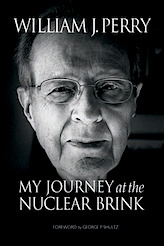 William J. Perry [Former Secretary of Defense]
William J. Perry [Former Secretary of Defense]
Published by Stanford Security Studies, Nov. 2015
Perry argues that nuclear weapons now “endanger our society rather than securing it.” He is one of the founders, along with Sam Nunn, George Schultz, and Henry Kissinger, of the Nuclear Security Project.
In his own words:
“This book is a selective memoir of my experiences with nuclear weapons and nuclear crises, and its purpose is to alert the public to the real and growing dangers of a nuclear catastrophe. I hope you will read this book and learn from it. But I realize that this book, even if effective, will reach only a small audience. In particular, it will reach very few of our young people. The problems I have described are going to be with us for decades, so our young people must play a key role in dealing with them.
Therefore I have undertaken to put these concepts into a form more widely accessible and available to young people. I am doing this through the William J. Perry Project, whose goal is mass education on nuclear dangers… For some years I have taught a course at Stanford about nuclear dangers, and I am now developing that course into an online course that has the potential to reach not just hundreds of students, but hundreds of thousands… The broader series of educational materials under development is called “Nuclear Weapons: 20th-Century History, 21st-Century Decisions,” or 20-21 for short. We not only want people to understand the history, but to engage in current-day issues facing the United States, such as the impending nuclear arms race and the danger of a resumption of nuclear testing.
I hope to encourage young people to take the baton I am trying to pass to them. My generation created this existential problem- their generation must find a way to solve it.”
Important Public Meeting On the Future of Cleanup At Los Alamos – Join Us on November 12
Important Public Meeting On the Future of Cleanup At Los Alamos – Join Us on November 12
The future of hundreds of thousands of cubic meters of radioactive and hazardous wastes is being evaluated now. Will Northern New Mexico be turned into a permanent nuclear waste dump?
The New Mexico Environment Department (NMED) and Los Alamos National Laboratory (LANL) have been revising the 2005 Consent Order (CO), which is the agreement between the State and the Feds for fence-to-fence cleanup of legacy Cold War wastes. The work in the CO, was supposed to be completed by December 2015. It was designed as a plan-to-make-a-plan with investigations of contaminated sites followed by cleanup decisions and remediation. Milestones and penalties were included to keep funding and cleanup on track.
What have LANL and NMED come up with to replace the 2005 Consent Order? Looks like we’ll have to wait until Thursday November 12th to find out. NMED and LANL have announced a public meeting to explain their ideas for the revised CO. There is an opportunity for public comments at the special meeting and we need you there. But it is unclear what NMED will do with any comments made. The public has been left out so far. Nuclear Watch New Mexico is pressing for meaningful responses to all comments and for actual inclusion of the public’s wishes into the revised CO.
In particular NukeWatch will be pushing for concrete milestones that are set from the beginning for all actions, for penalties when deadlines are not met, and for a new final end date. The revised Consent Order cannot be open-ended.
Northern New Mexico has been waiting long enough for cleanup at Los Alamos. Much of the waste buried in unlined dumps perched above our aquifer has been slowly releasing into the ground and heading towards our aquifer since the 1950s and 1960s. The Cold War ended in the early 1990s. Enough is enough.
We hope to see you at the meeting on November 12.
Northern New Mexico Citizens’ Advisory Board Meeting
Revised NMED/ LANL Consent Order Special Meeting
Thursday, November 12, 2015
1:00 p.m. to 4:30 p.m.
Cities of Gold Conference Center
10-A Cities of Gold Road
Pojoaque, New Mexico 87506
DRAFT AGENDA
1:00 p.m. Call to Order – Lee Bishop, DDFO
Welcome and Introductions – Doug Sayre, Chair
Approval of Agenda
Opening Remarks
1:15 p.m. New Mexico Environment Department Perspective on Revised Consent Order – Secretary Flynn
1:30 p.m. Department of Energy Perspective on Revised Consent Order – Doug Hintze
1:45 p.m. History of Work Already Completed – Doug Hintze
2:00 p.m. Campaign Approach – Doug Hintze
2:30 p.m. Break
2:45 p.m. Campaign Approach (continued) – Doug Hintze
3:30 p.m. Schedule of Actions – NMED
3:45 p.m. Public Comment Period
4:30 p.m. Adjourn – Lee Bishop


